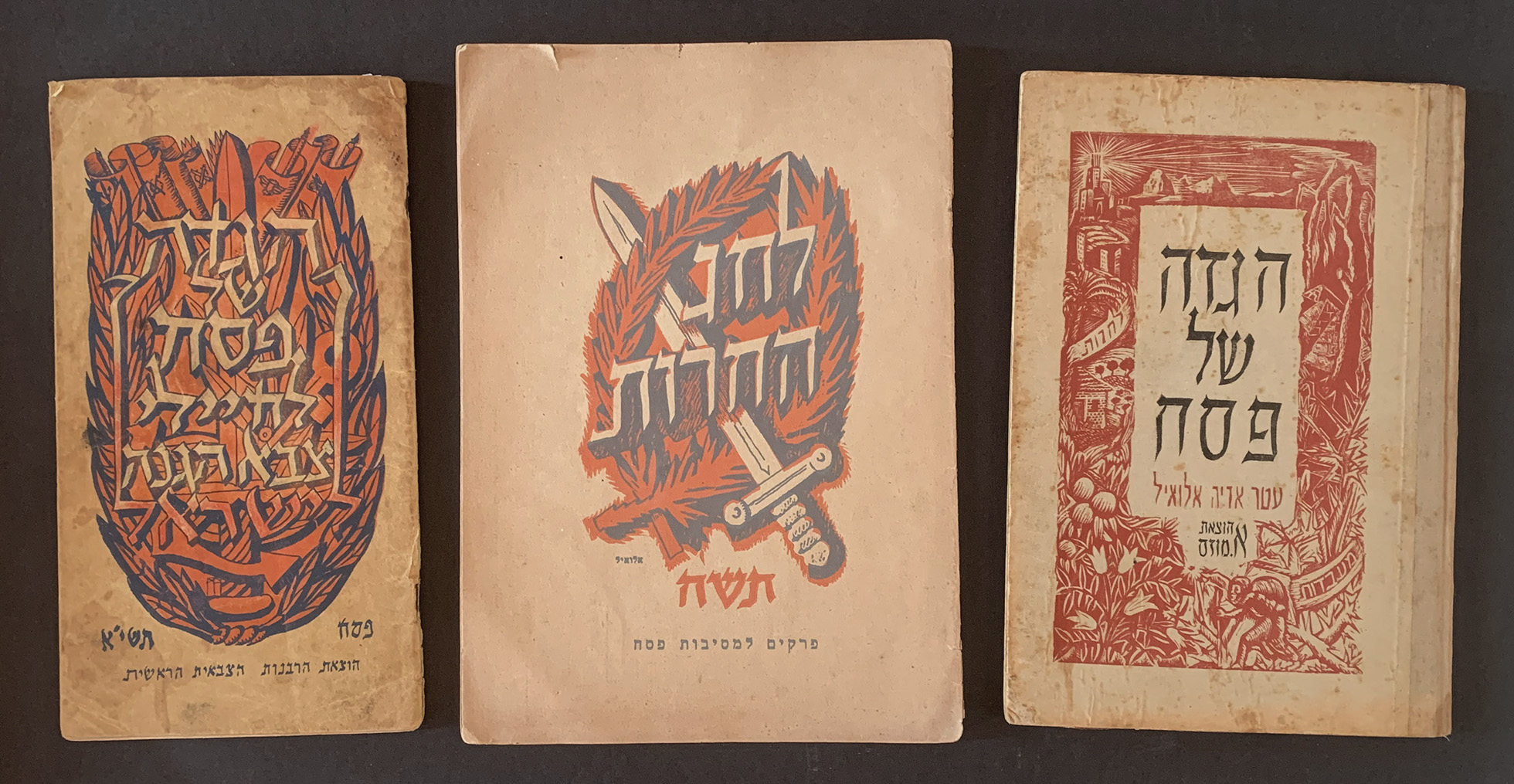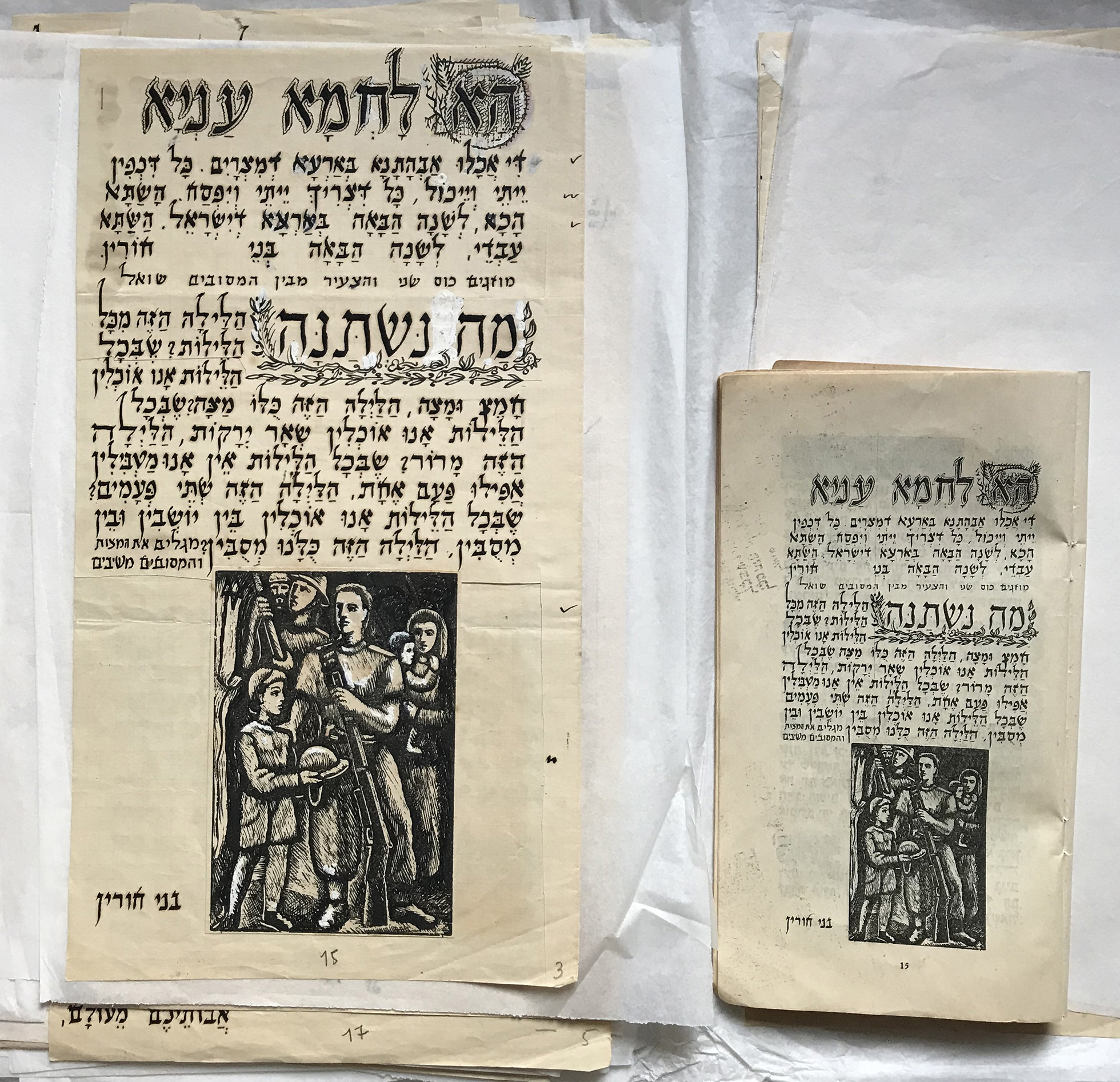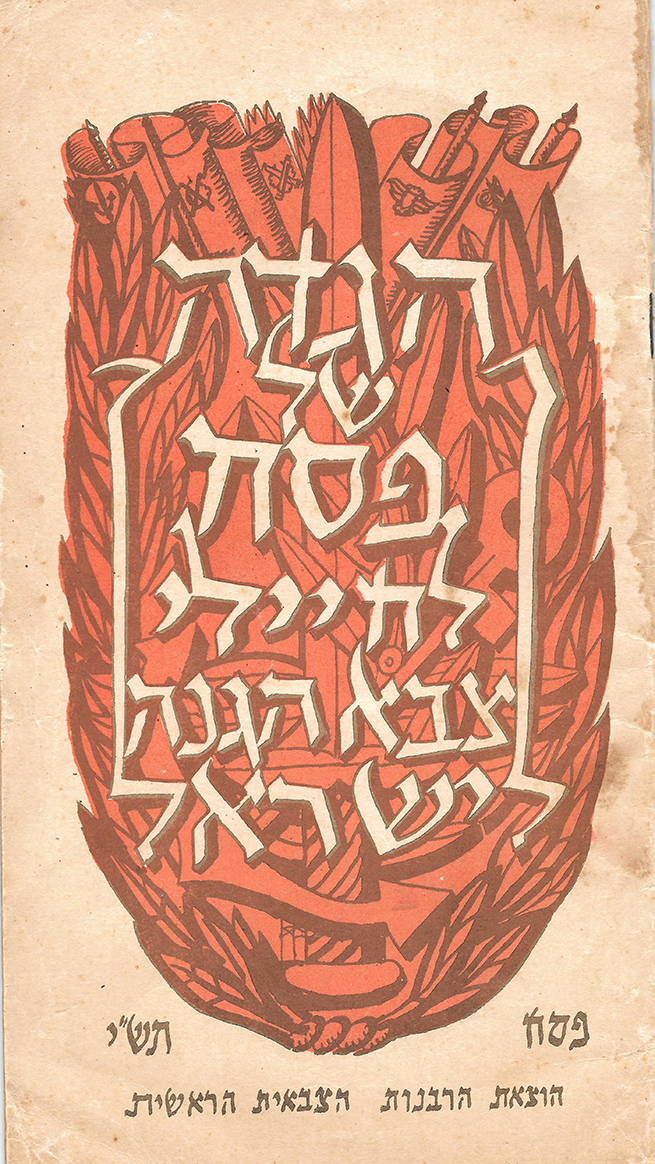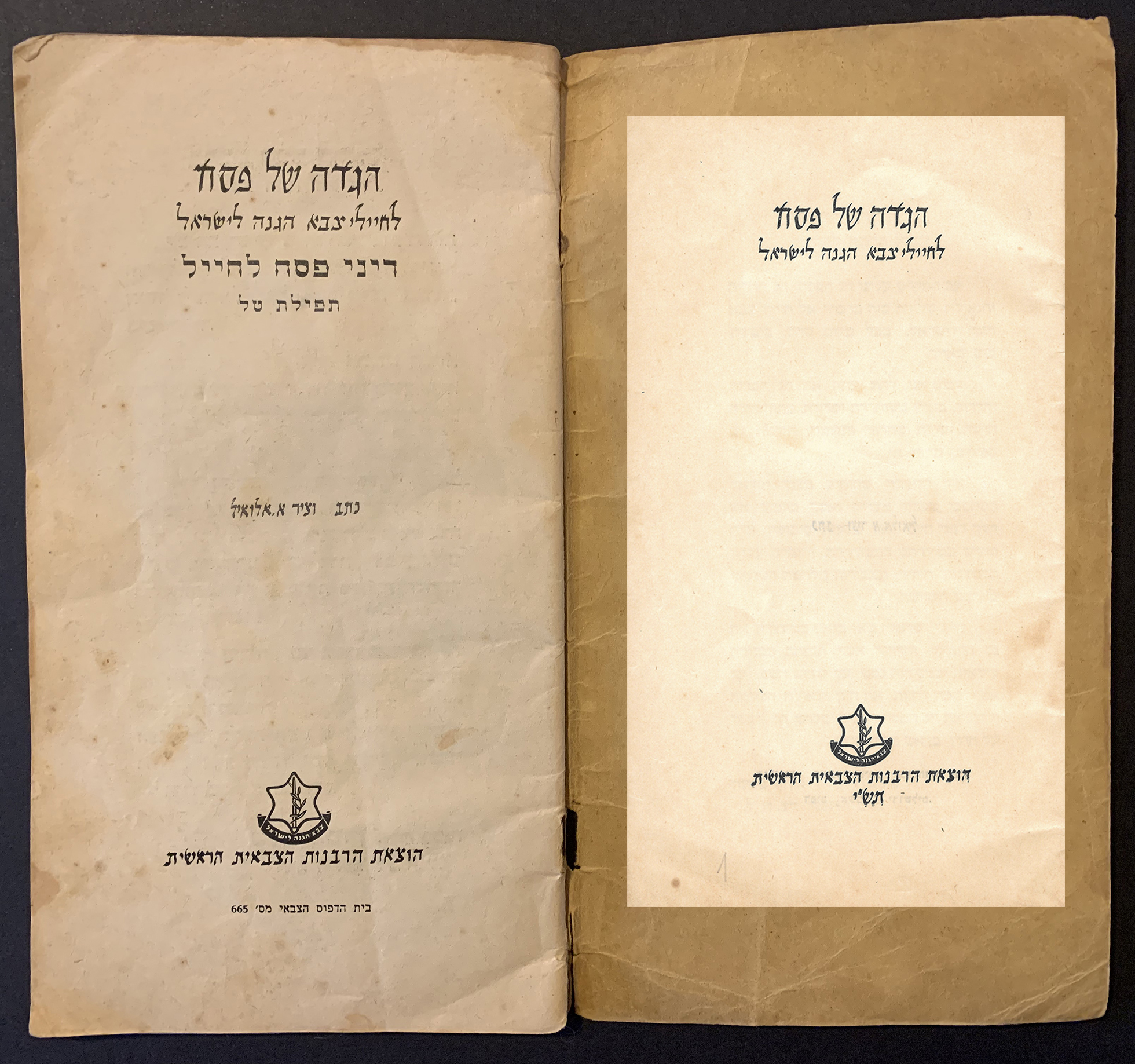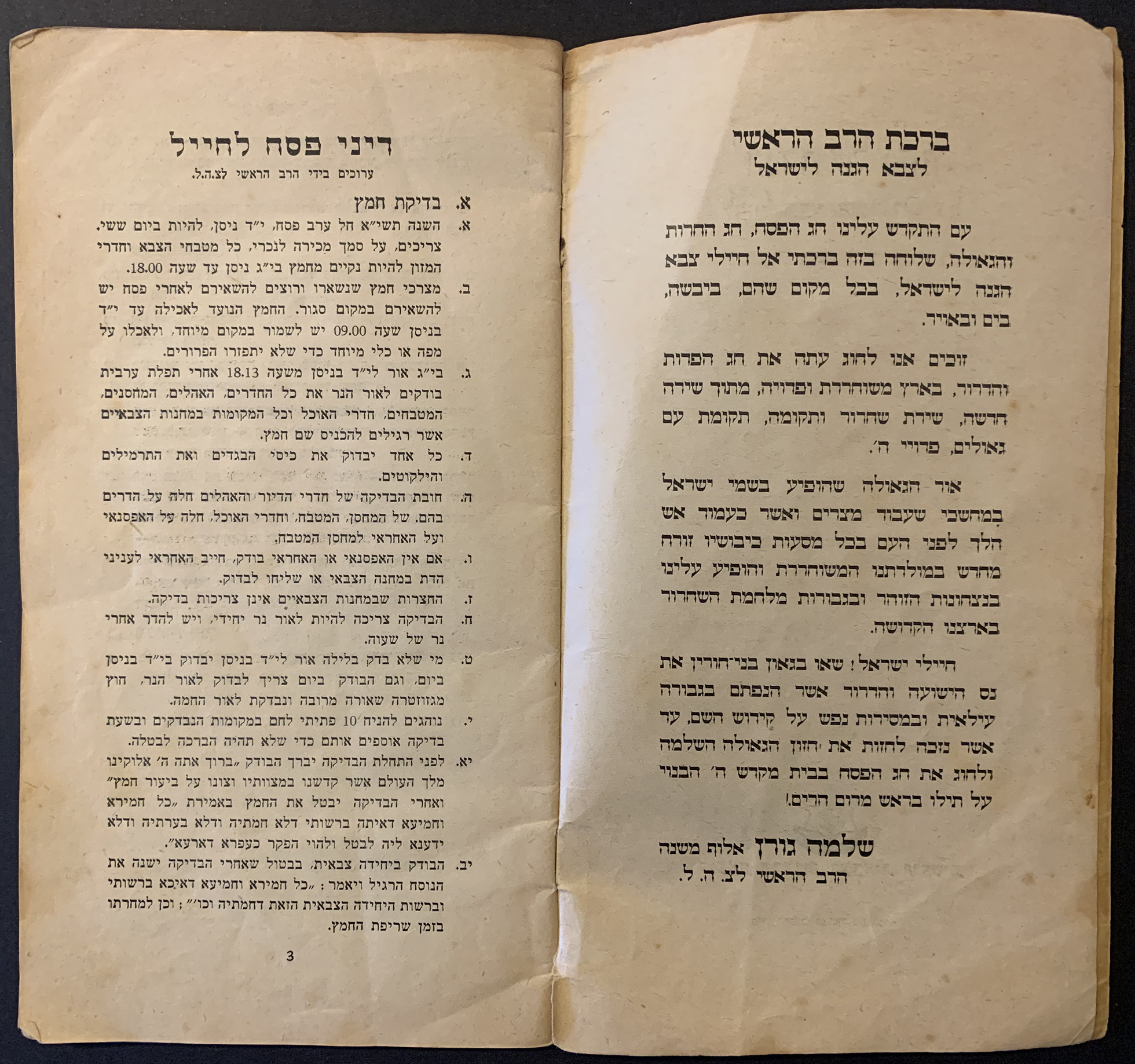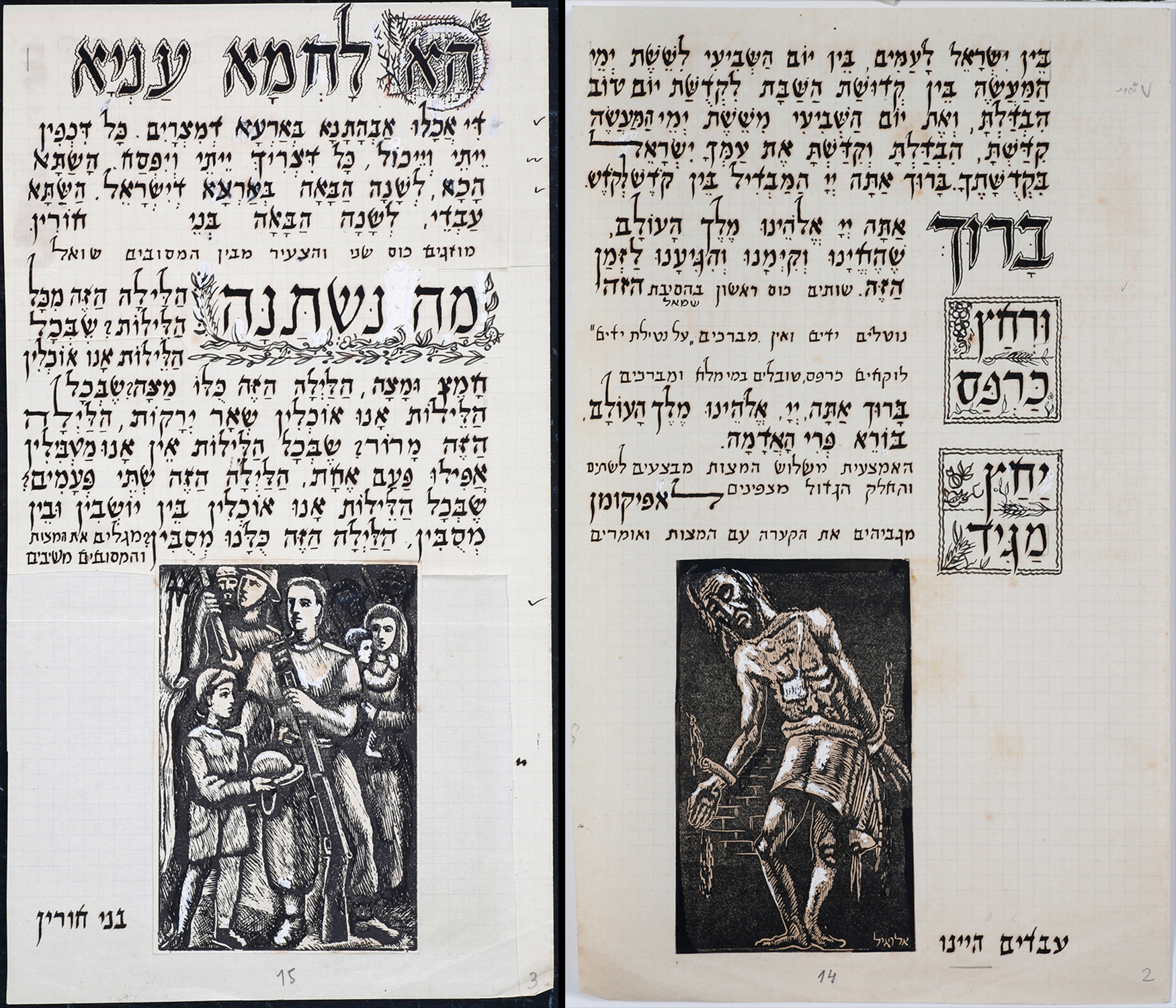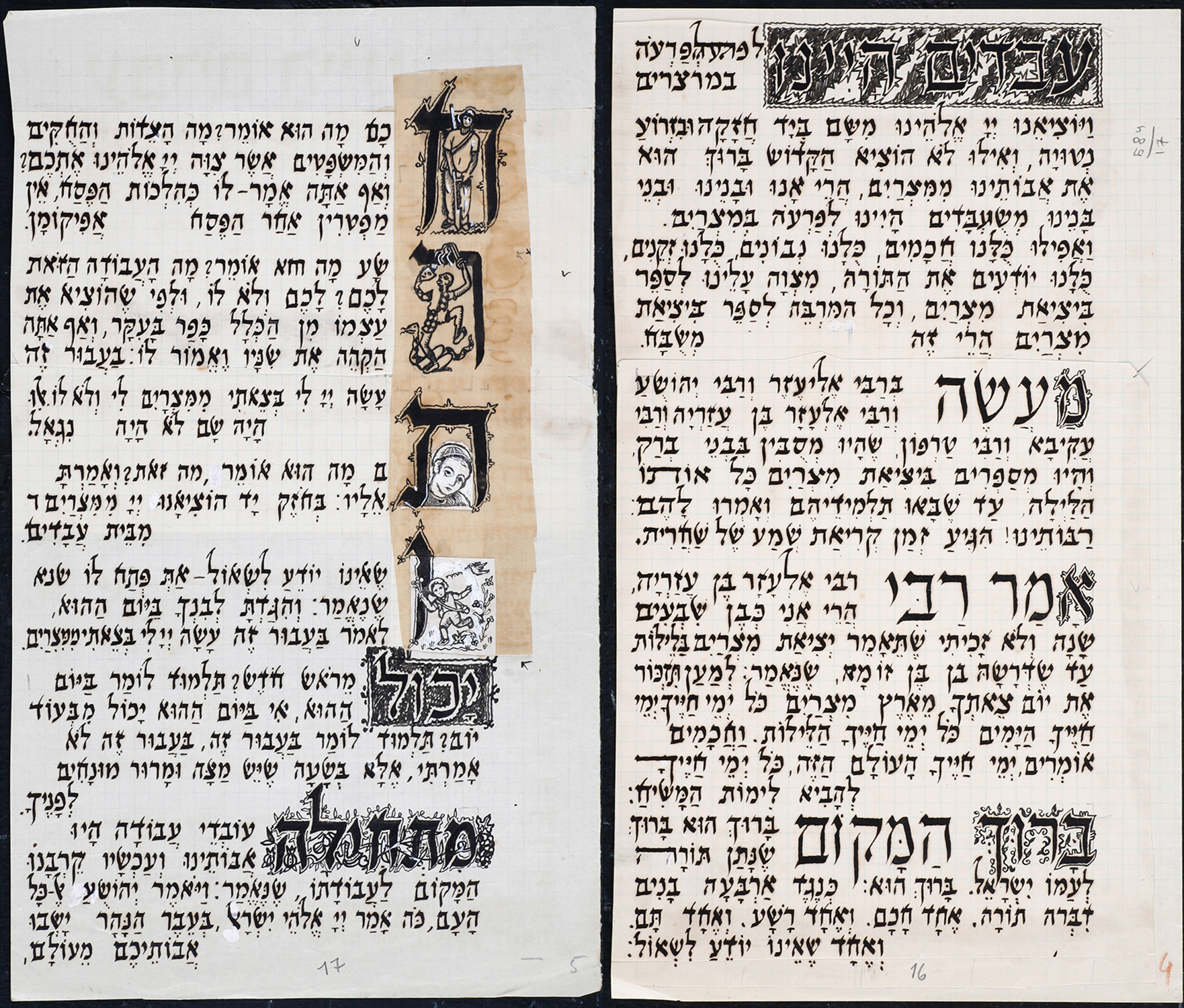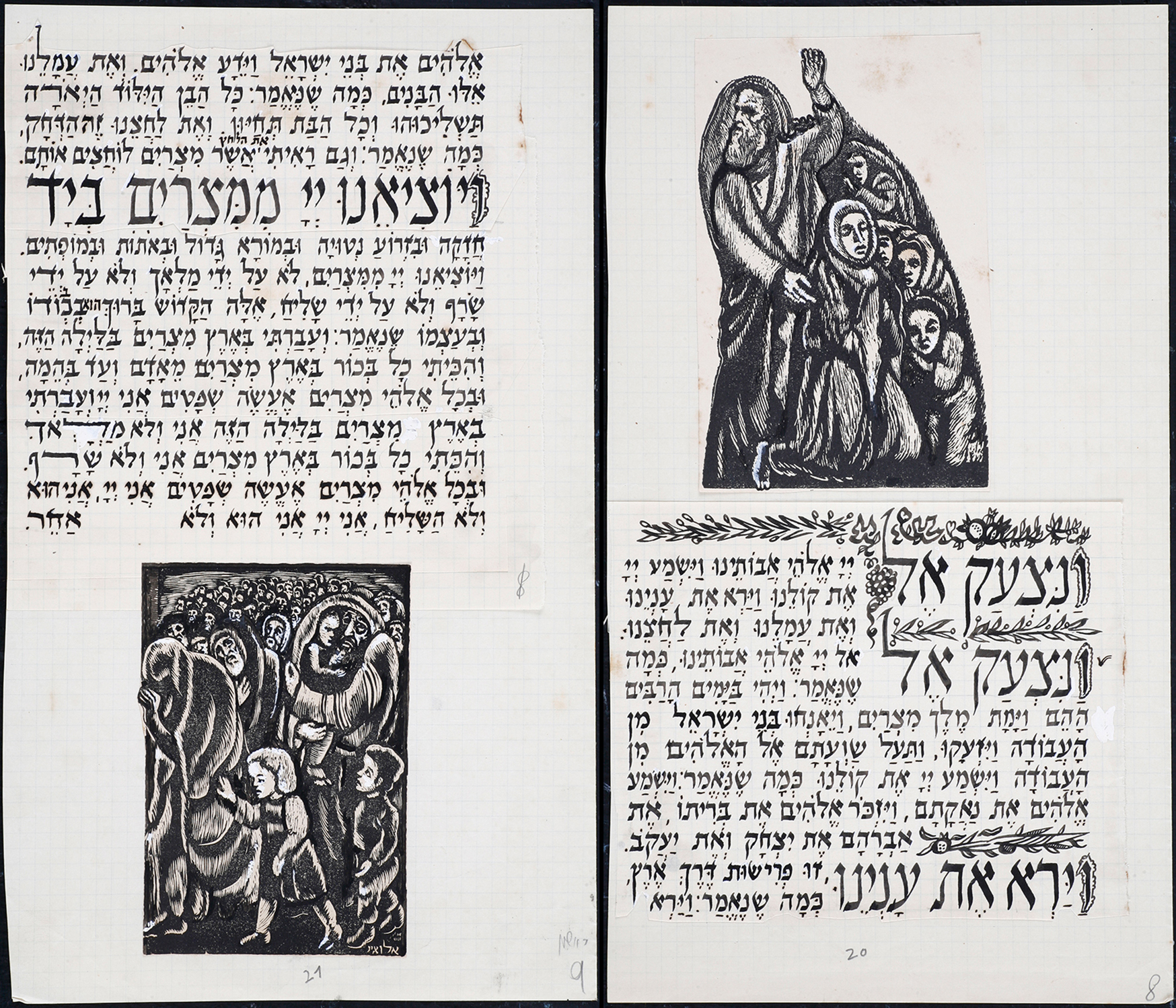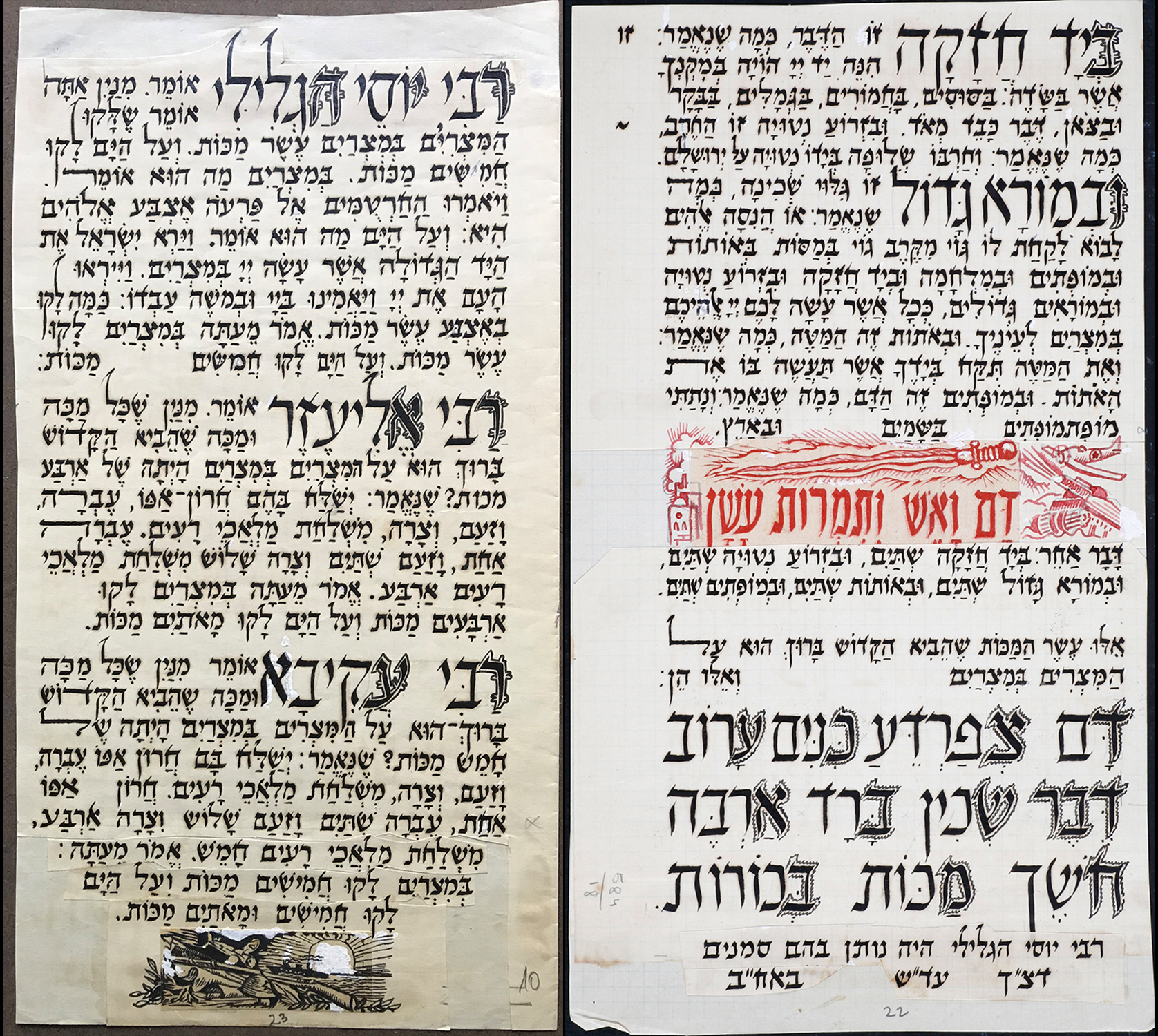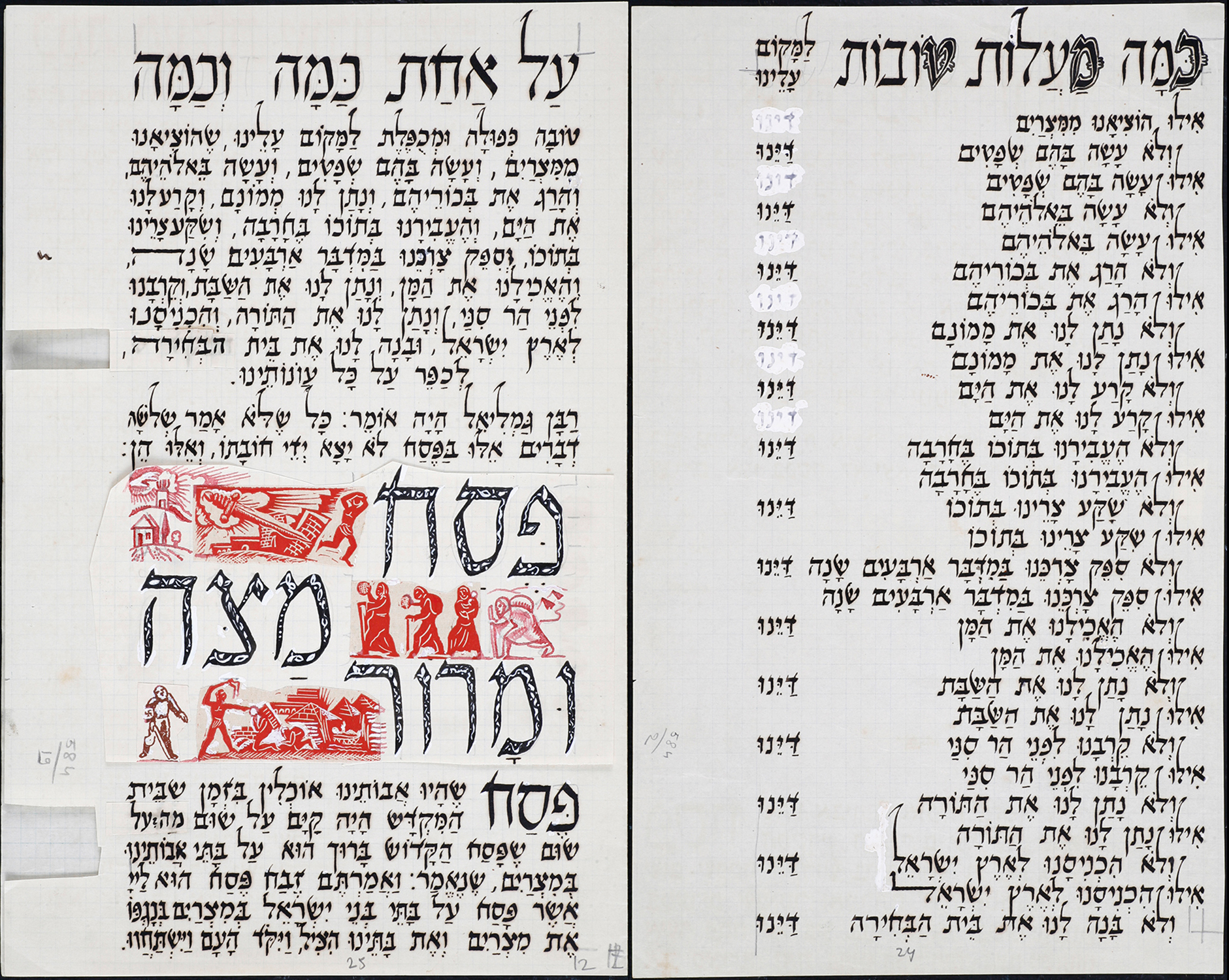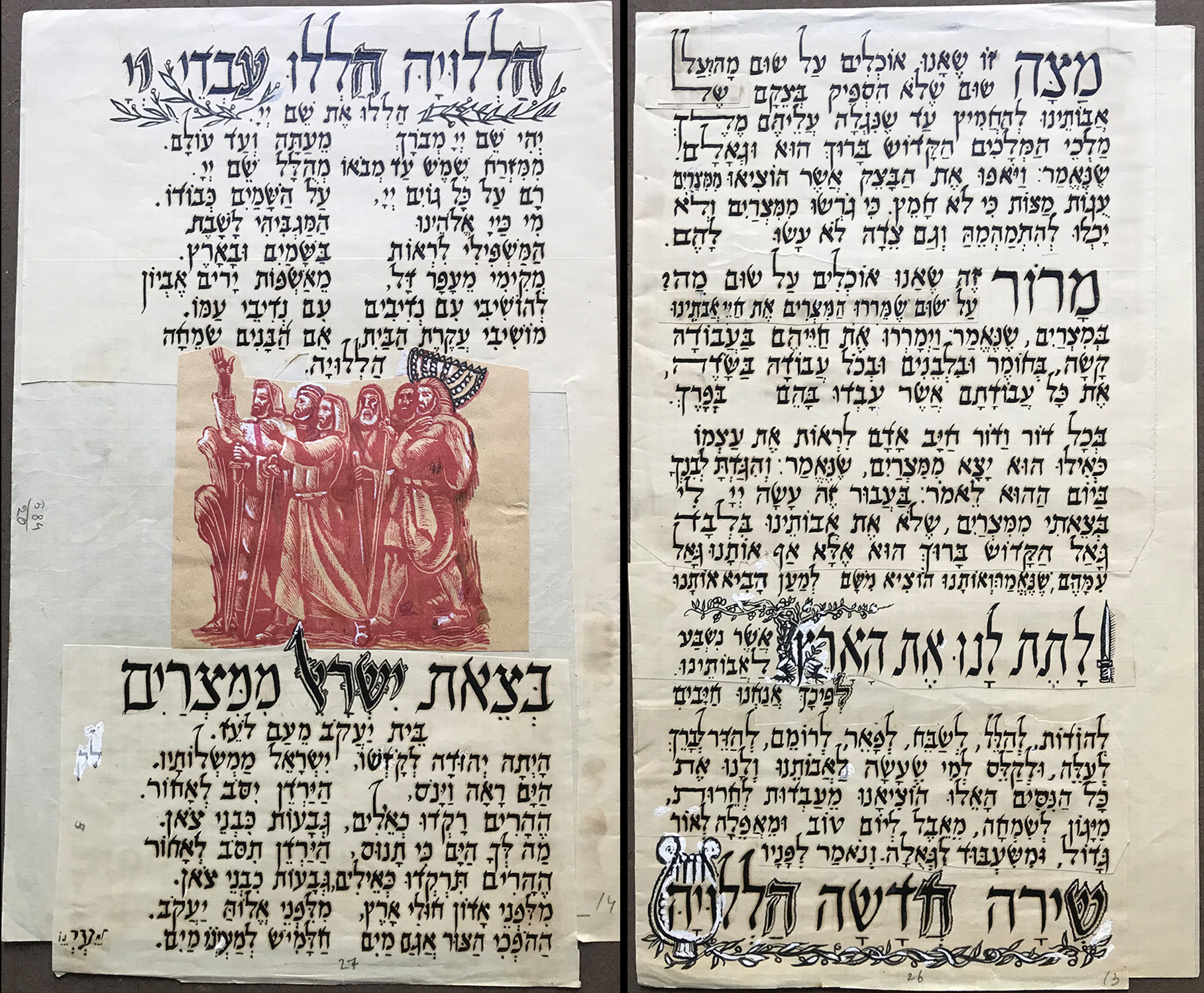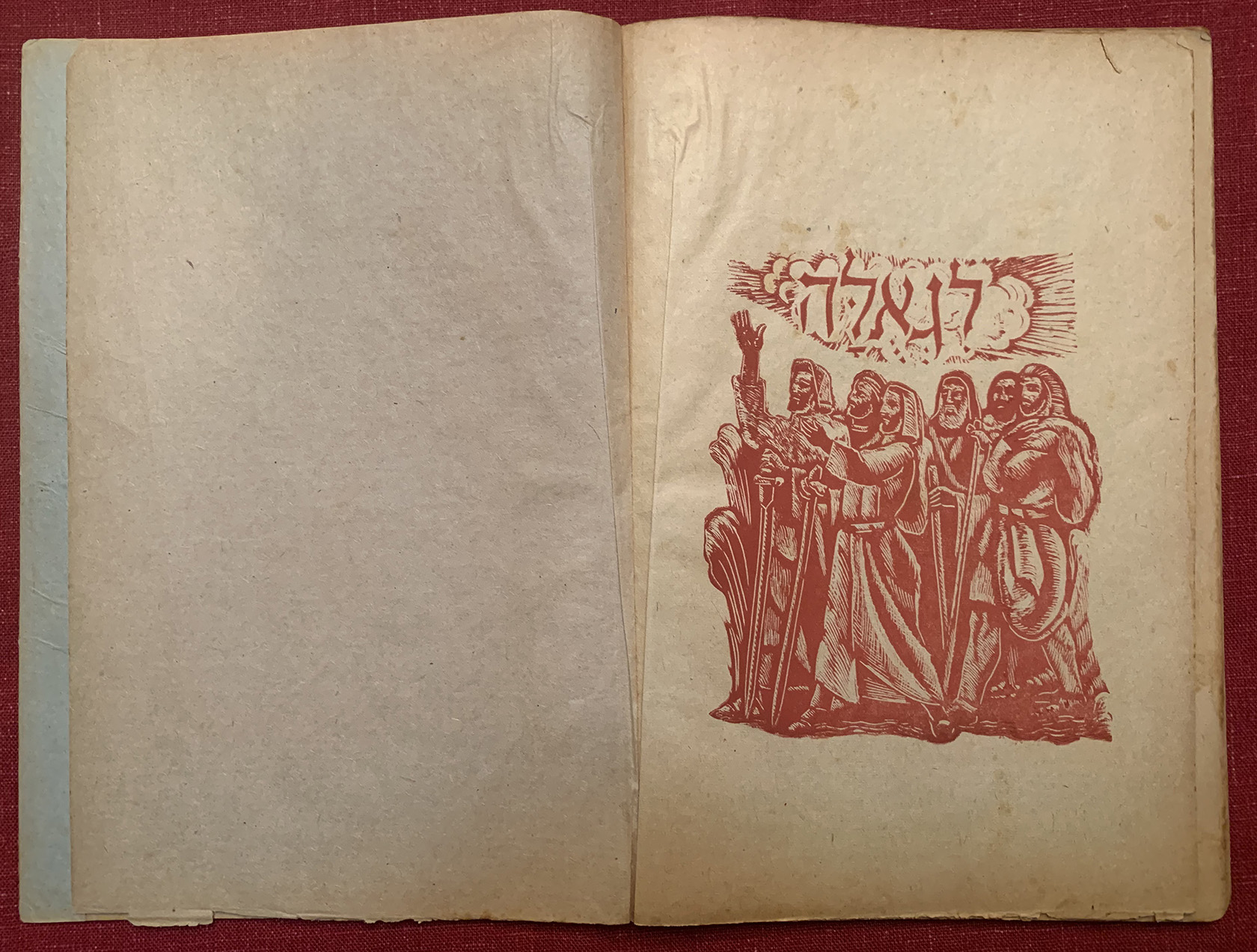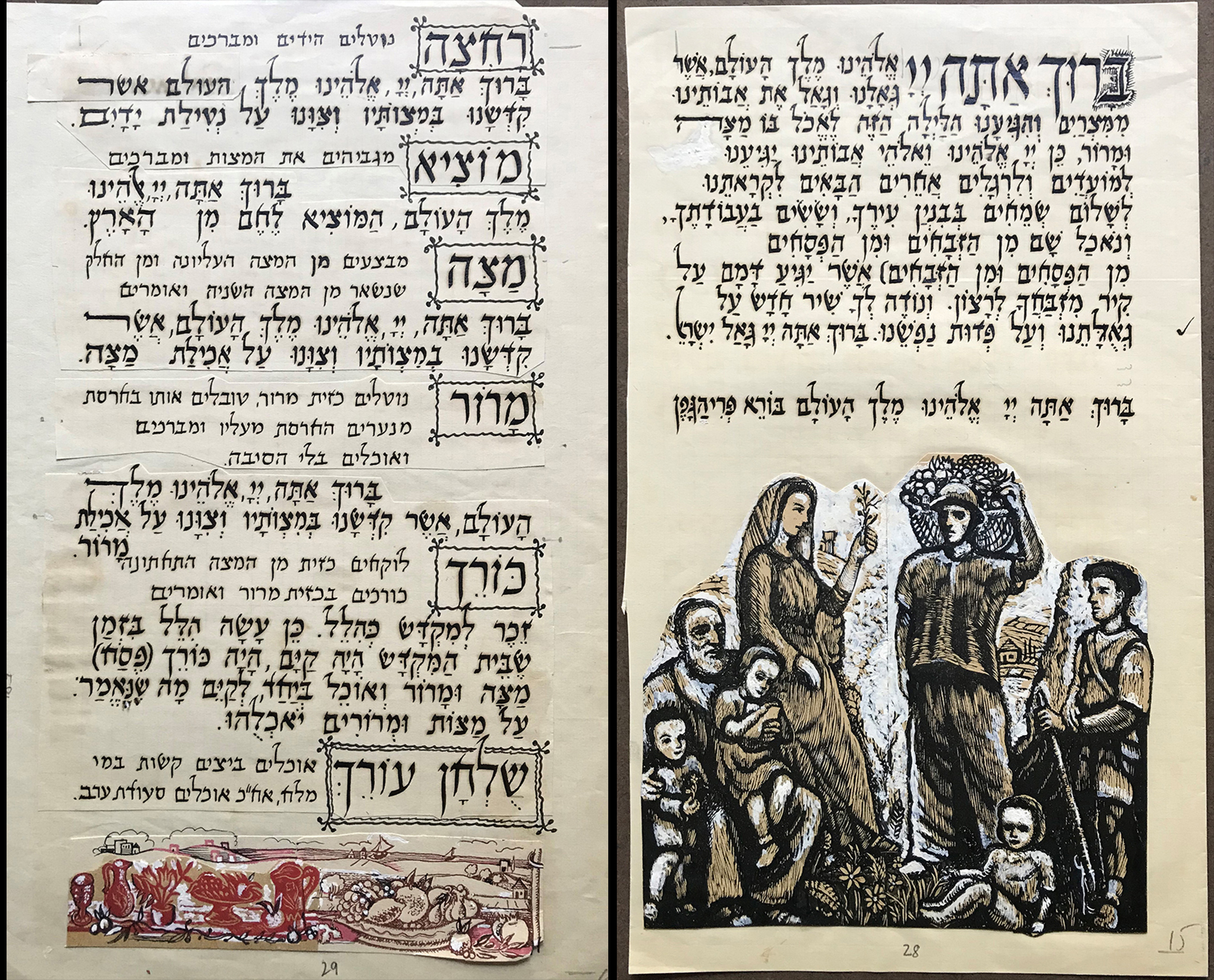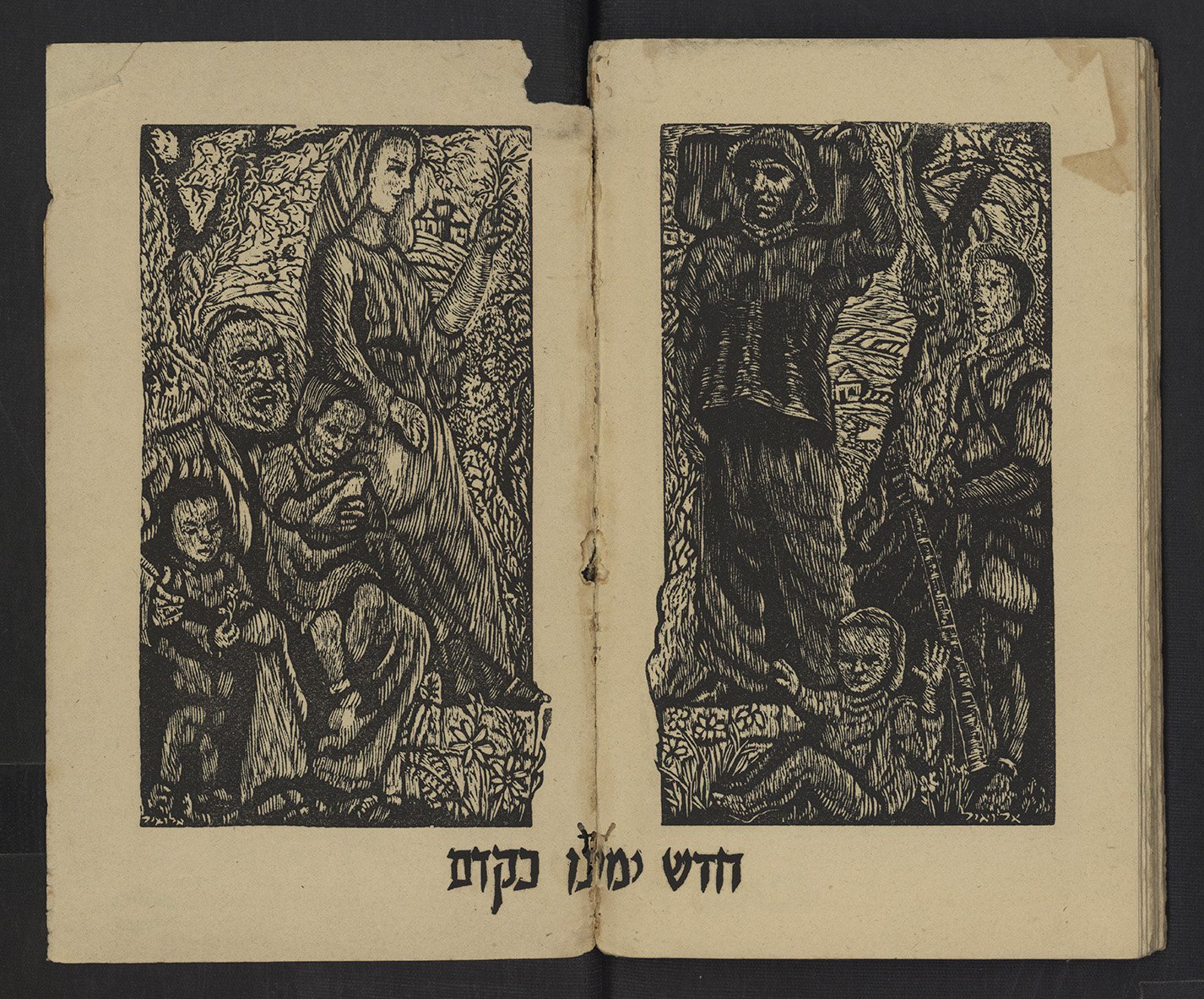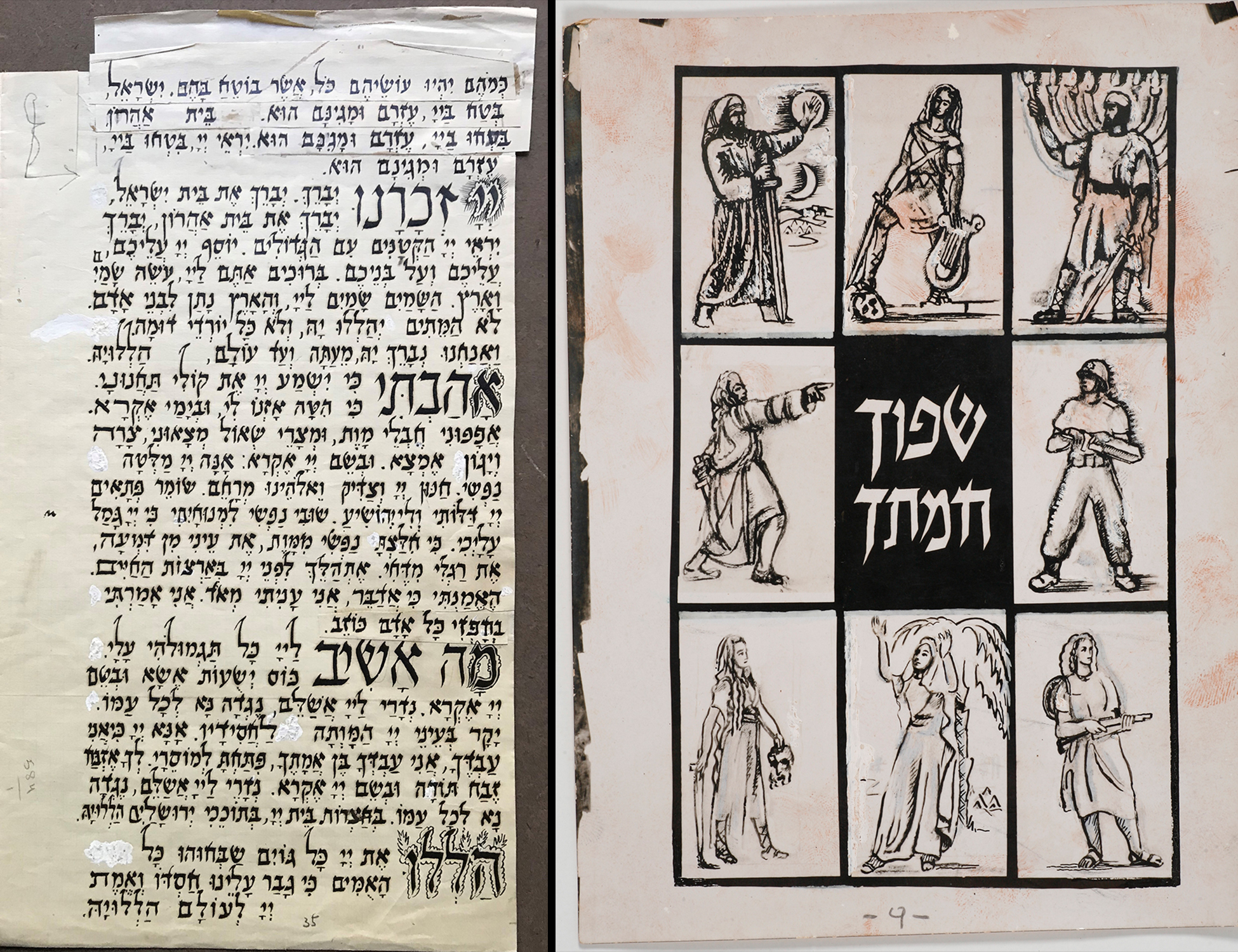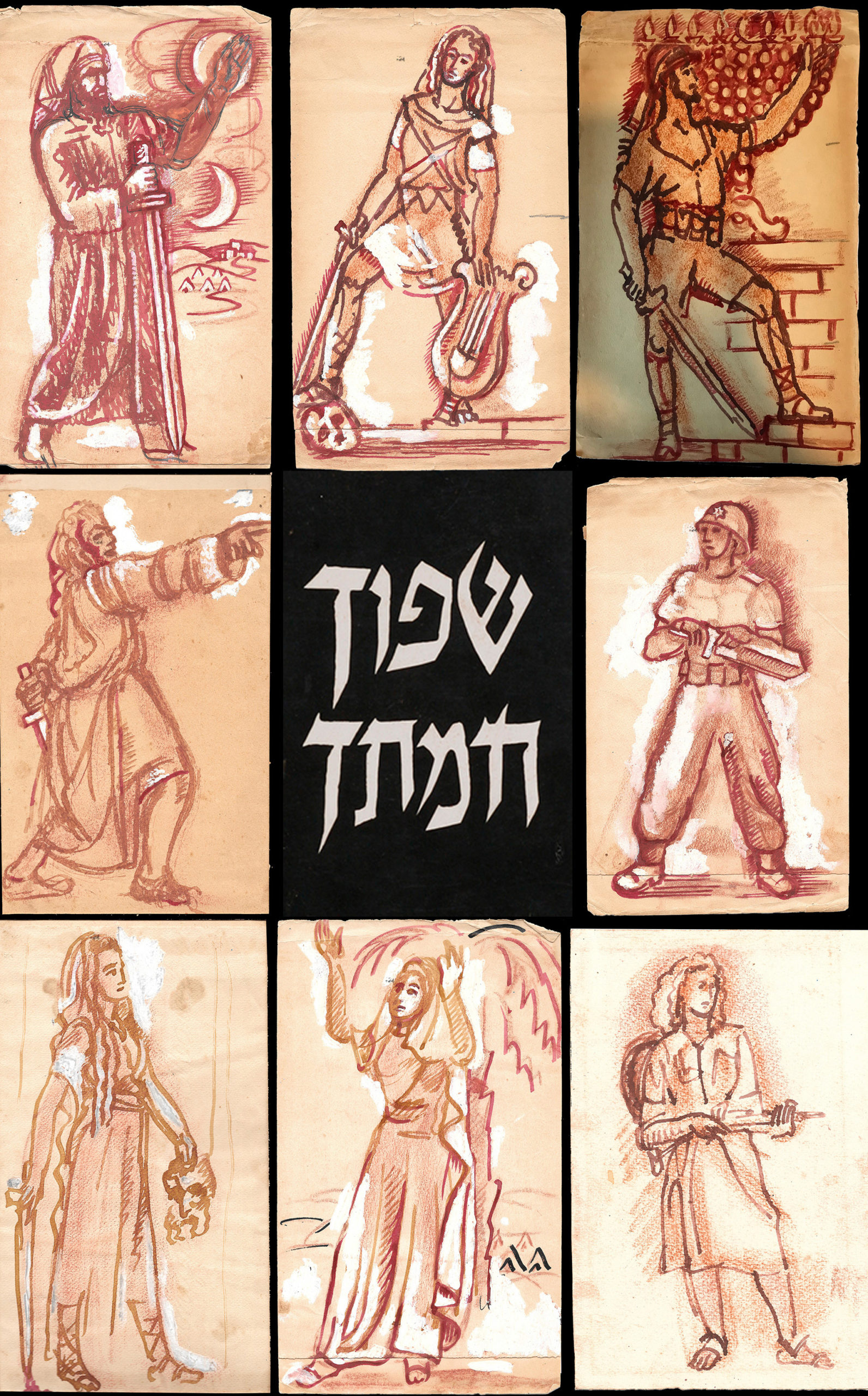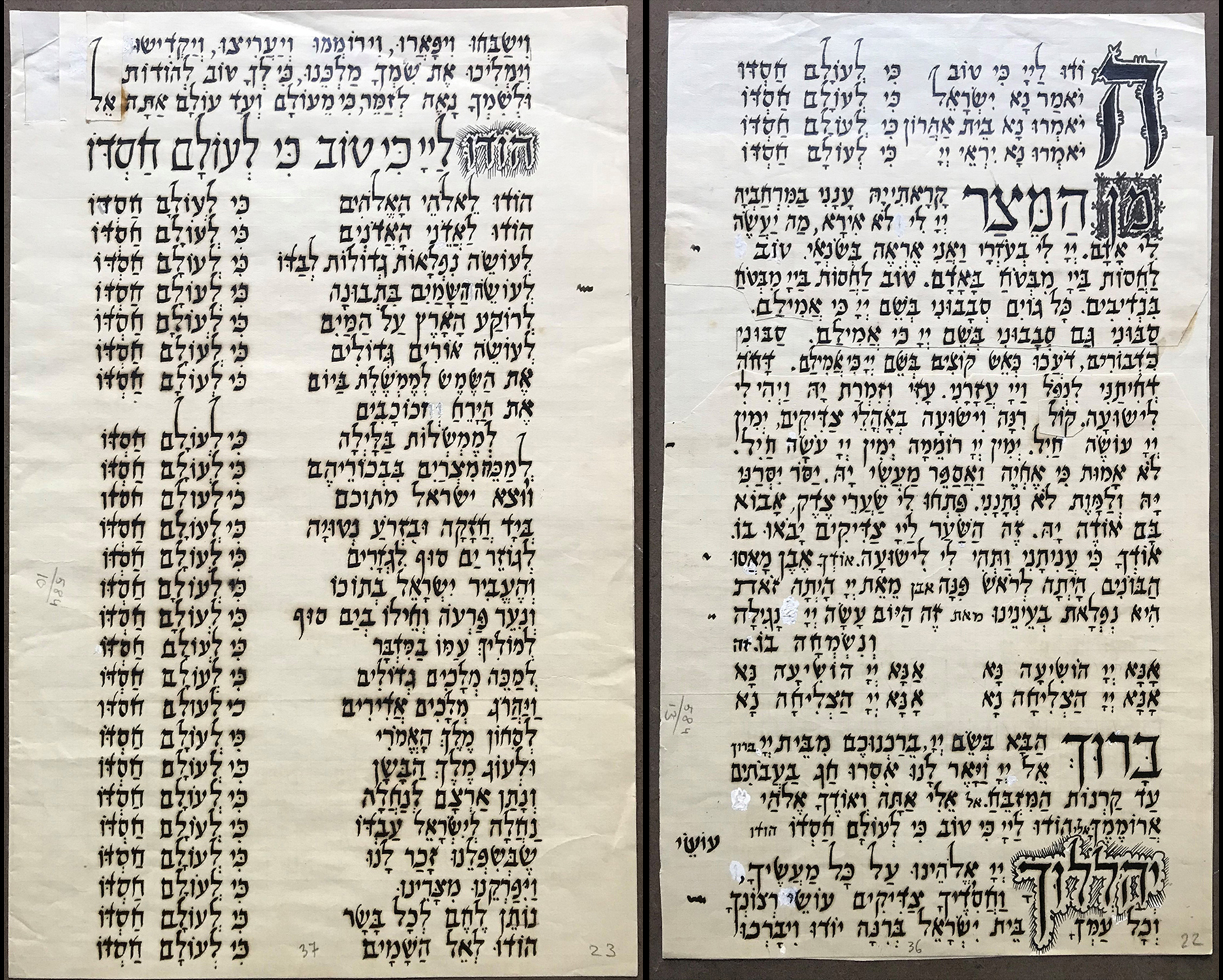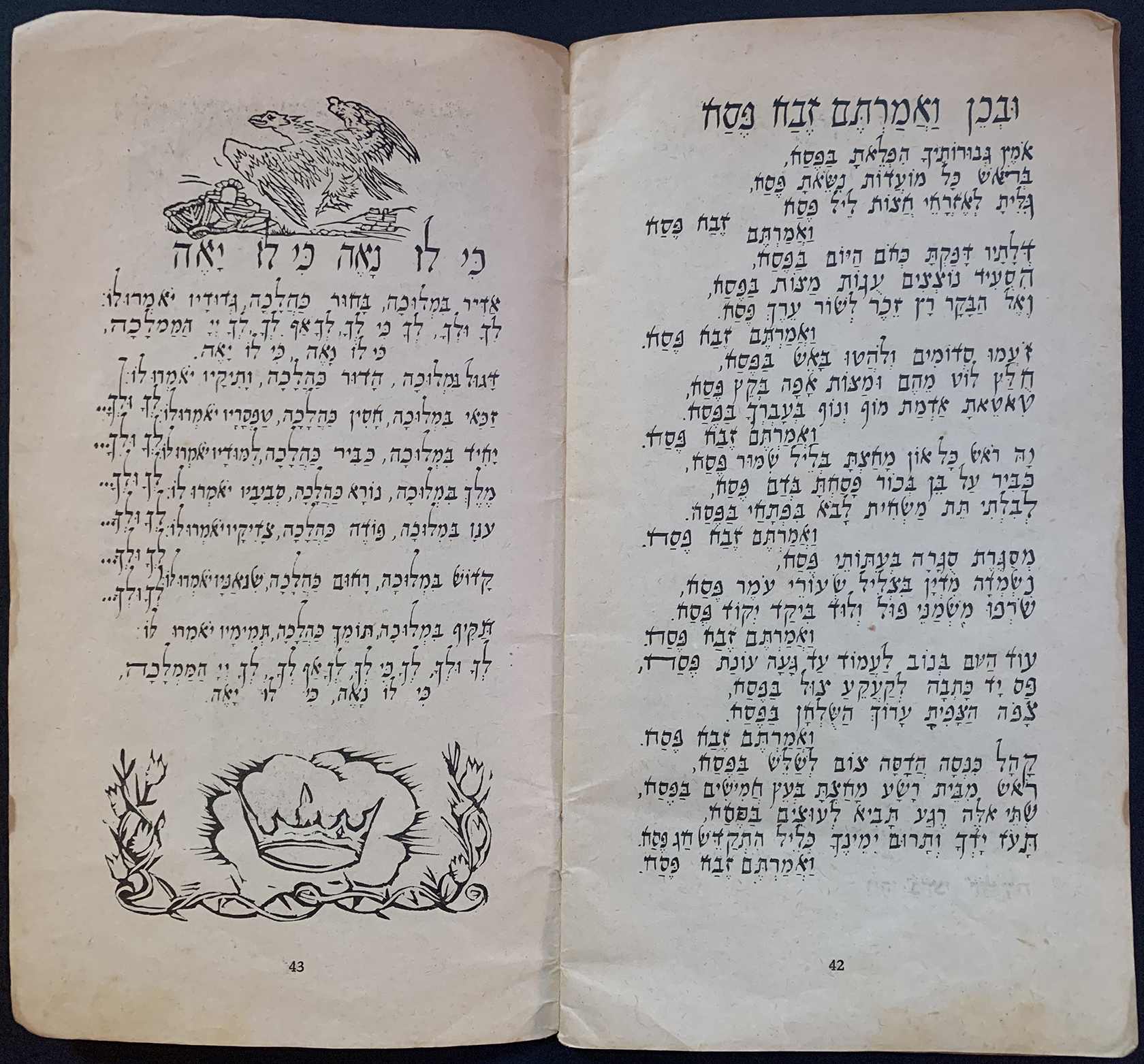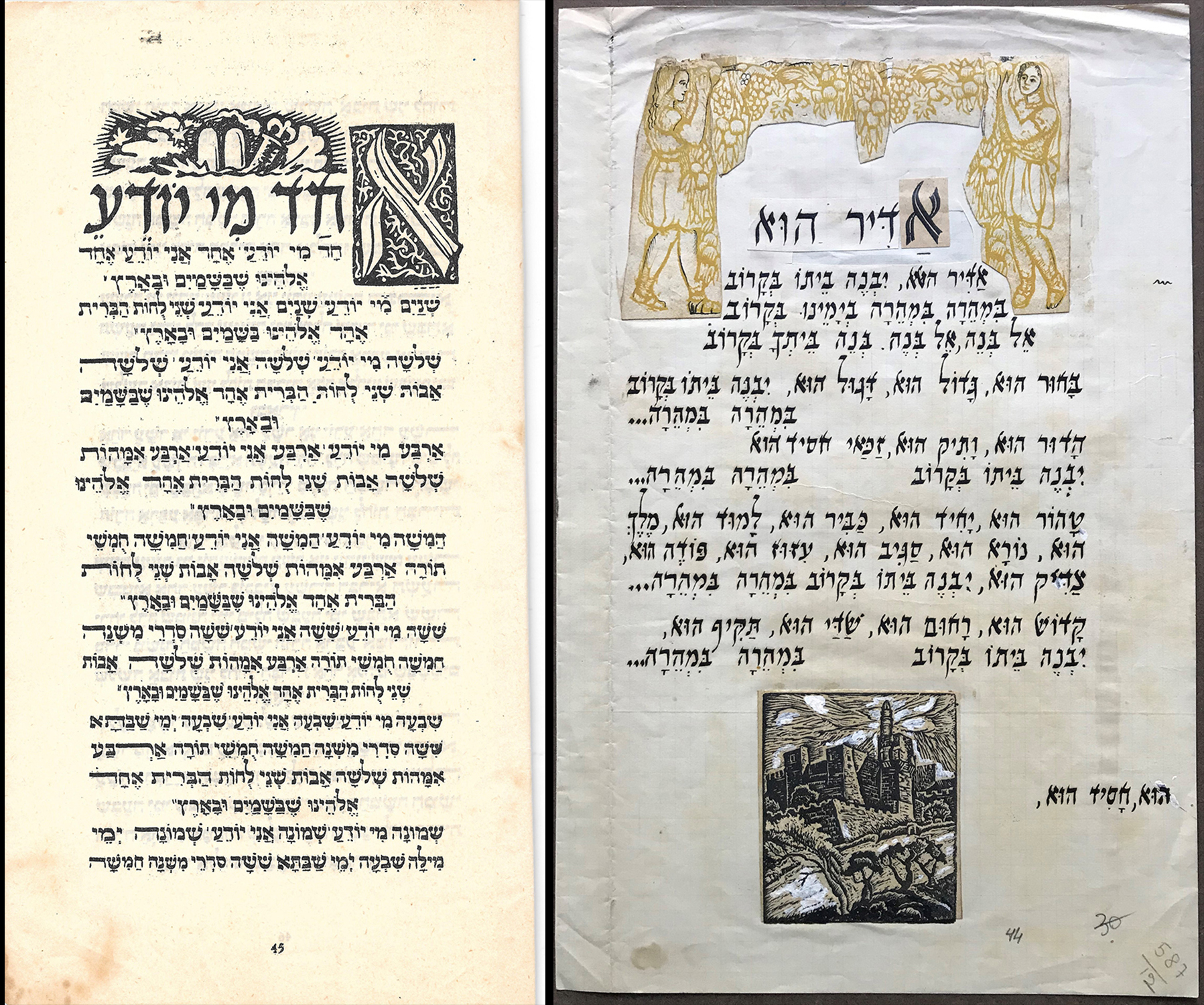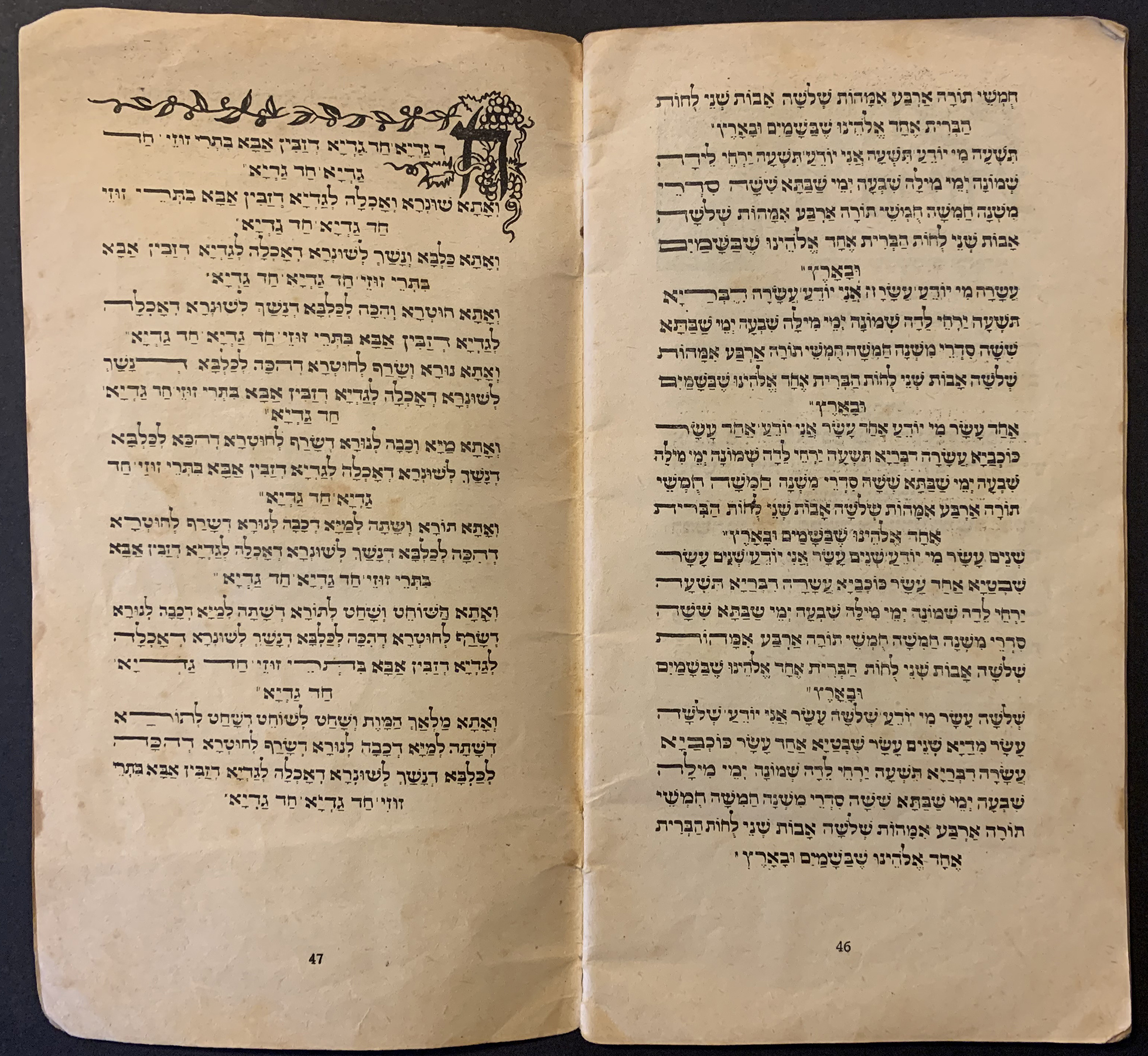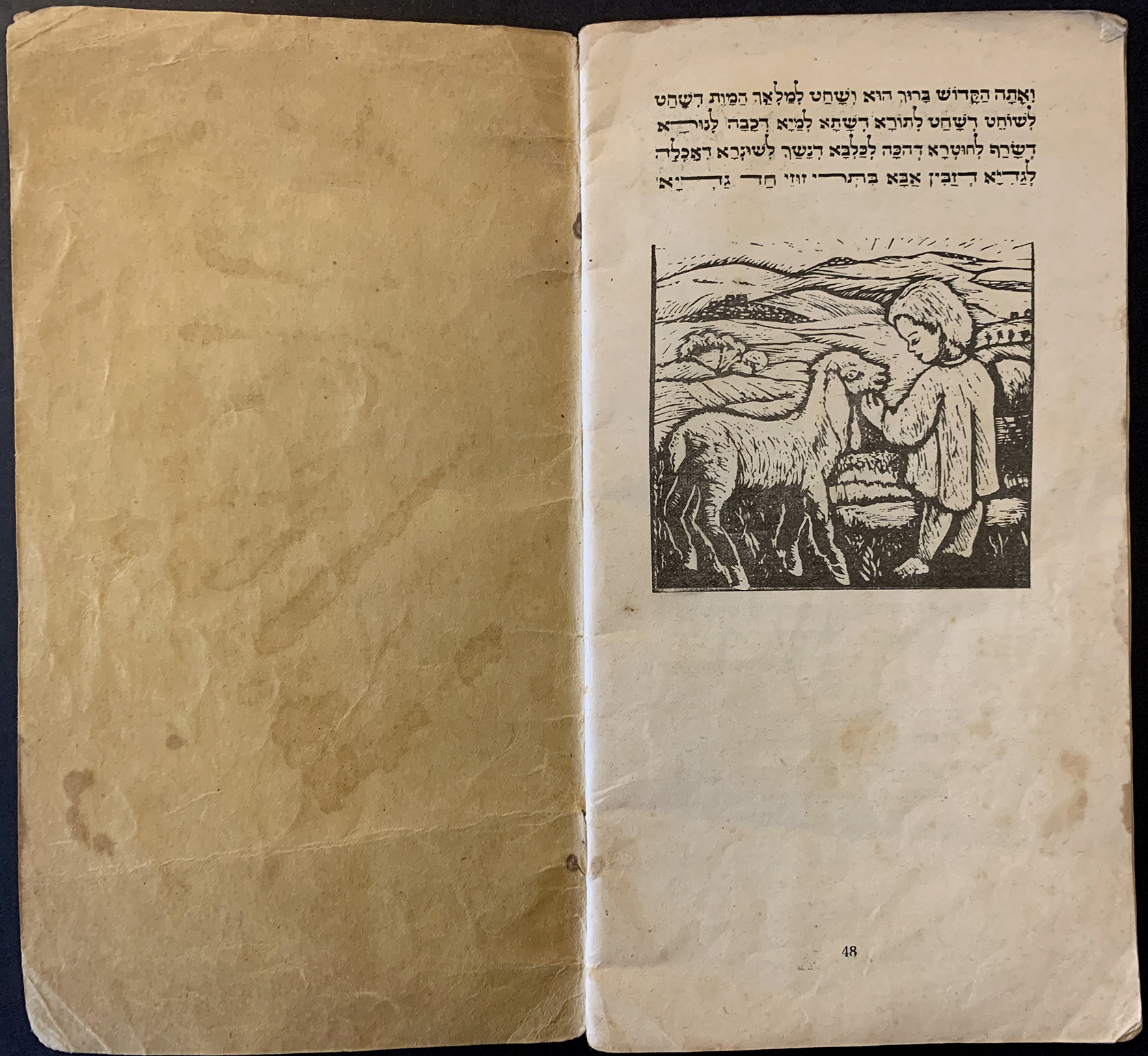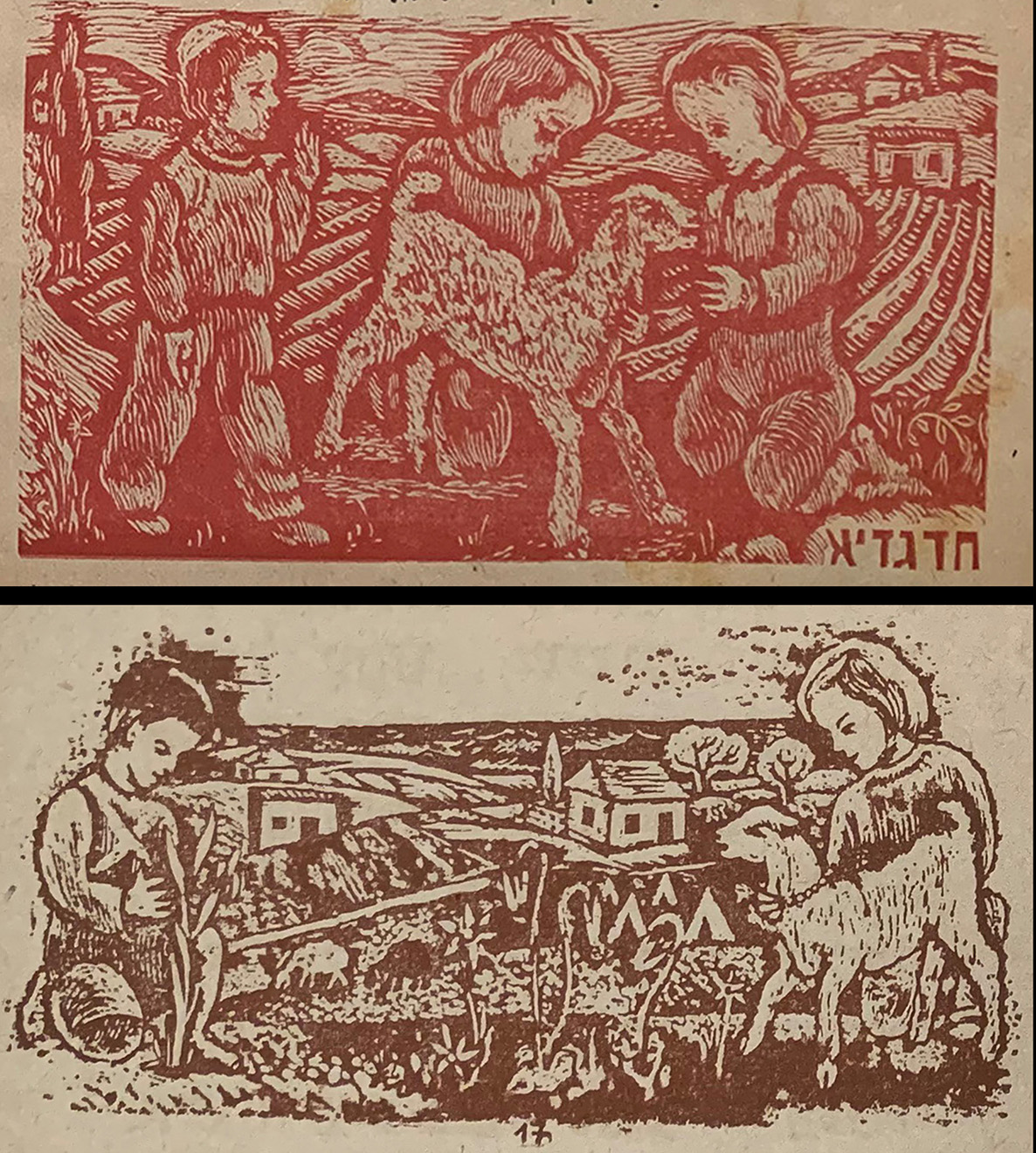Arieh Allweil’s IDF Haggadah
Introduction
In many ways artist Arieh Allweil (1901-1967) created the IDF Passover Haggadah (1950) as the counterpoint to his Chapters for Passover Celebrations (1948). The latter was for the Haganah, the Zionist paramilitary organization that fought the British, Palestinian Arabs and their allies in order to end Mandatory Palestine. The former Haggadah, as its name states, was for the IDF–the Israel Defense Forces–for the independent nation of Israel. Haganah members became the core of the IDF.
Chapters was not a complete Haggadah. As I quoted his daughter Ruth Sperling in my previous Allweil blog post: “Our father’s Chapters for Passover included only small parts of the Haggadah with the emphasis on freedom and the independence war that was going on.” The IDF one was a complete Haggadah, but, as the title indicates, it was created for seders celebrated by members of the military.
These are the covers of the three Haggadot that Allweil created up to 1950. I’ve done separate blog posts on the two earlier ones: (right) Haggadah for Passover from the early 1940s (LINK) and (middle) Chapters for Passover Celebrations of 1948 (LINK). This post is devoted to (left) his IDF Passover Haggadah of 1950.
While the covers of all three feature his linocuts printed in two colors, in a very cursory way let me summarize the differences of the interiors:
-
- He illustrated Haggadah for Passover with newly made linocuts, printed either in black or red ink. Except for the cover and a few passages in large letters, the Hebrew text is machine made.
- For Chapters for Passover Celebrations he created images with lithography. All of the text is his own calligraphy.
- Most of the text in the IDF Passover Haggadah is his own calligraphy. Many of the illustrations were linocuts he borrowed from his earlier books. They were reduced in size from the original printings, and some he modified. Page 34 is the one notable exception. He drew the eight small figures with pen and ink.
As in my other two posts on Allweil Haggadot, I’ll present pages of his IDF Passover Haggadah, but with one important difference. Instead of the published versions, the daughters of the artist, Sperling and Nava Rosenfeld, have provided the pages that Allweil assembled to be photographed. They provide a unique view of his creative process as a book-maker. I’m always thrilled when I can see the hand of the artist at work.
The contents Allweil’s Haggadot, preliminary drawings and photos of paste-ups
are presented courtesy of the Estate of Arieh Allweil.
IDF Passover Haggadah
The following are the pages of Allweil’s IDF Passover Haggadah. In most cases this blog post offers the actual pieces of paper that Allweil sent to be photographed, from which metal plates (stereographs) were made to fit onto the press. As illustrated above, the paper he sent to be photographed were larger the the intended size of the Haggadah. These papers measure approximately 13″ x 8.2″ (33 cm x 20.8 cm), while the published Haggadah measures appropriately 8.75″ x 4.75″ (22.2 cm x 12.1 cm).
These camera-ready papers were typically laminated, i.e. several pieces of paper glued together. To keep his calligraphy aligned, Allweil often began by pasting a sheet of blue-lined graph paper onto paper that he would pen and ink to write the Hebrew text. (The camera does not record blue.) Besides his original calligraphy his camera-ready papers (that in the trade were called “paste-ups”) he would employ opaque white paint for corrections to tidy up both text and images and add drawings in either black or red ink. He also used linocuts from his previous books. For instance he created the linocut, above, for his 1942 book Scroll of Esther. Even though some of his illustrations appear in red on the paste-ups, the camera recorded them as black. Except for the cover, which appears to be a newly created linocut in red and black, the interior is only printed in black.
As you view that following paste-ups, notice the pieces of paper that Allweil assembled for each page.
Sperling said Allweil employed a variety of pen nibs for his calligraphy and that “he used to buy this ink from an old Yemenite, Sofer Stam, who prepared the ink by himself.”
The Haggadah begins on page 13. Pages 2-12 are directed at IDF soldiers. On Page 2 is the Blessing by Rabbi Shlomo Goren, the Chief Rabbi of the IDF. Then on pages 3-12 are rules for Passover for the IDF soldier. I asked how the rules for soldiers differ from those for a civilian Seder. Rosenfeld answered: “The instructions specified are the same in general. They say what to do privately and how to keep Passover instructions in the common areas of the camp.”
The paste-ups for the Haggadah are complete from Page 13 through 45. The last pages–46, 47 and 48–are photos from my copy of the Haggadah. The daughters did not send me paste-ups of these because, Rosenfeld said, they “are not printed with Allweil’s letters”–i.e. not his calligraphy. They are the text of the song “Who Knows One.” He did draw the illuminated letter atop Page 47.
Sperling believes this Haggadah was first published in 1950. Besides a first-edition copy, she also has a copy dated 1955. My copy was dated 1951. Online I’ve seemed this Haggadah with a green and black cover that the seller states is from 1956. The IDF Passover Haggadah may have had other editions as well.
The Hebrew in the image of the first edition cover reads:
- In the cartouche: Haggadah for Passover for the Soldiers of the Israeli Defense Army.
- Below the cartouche, first line: Passover (פסח); Left: 1950 (תש״י)
- Below the cartouche, second line: Published by The Chief Military Rabbinat
Here are two title pages from two editions of the IDF Passover Haggadah. The one that the Allweil daughters sent me is superimposed on the inside cover of my copy.
Page 2 (right) is the blessing from Rabbi Shlomo Goren. Rosenfeld wrote that the Rabbi makes reference “to the soldiers who fought for the Freedom of Israel and compares it to the salvation from Egypt.” Page 3 begins the rules for Passover for soldiers.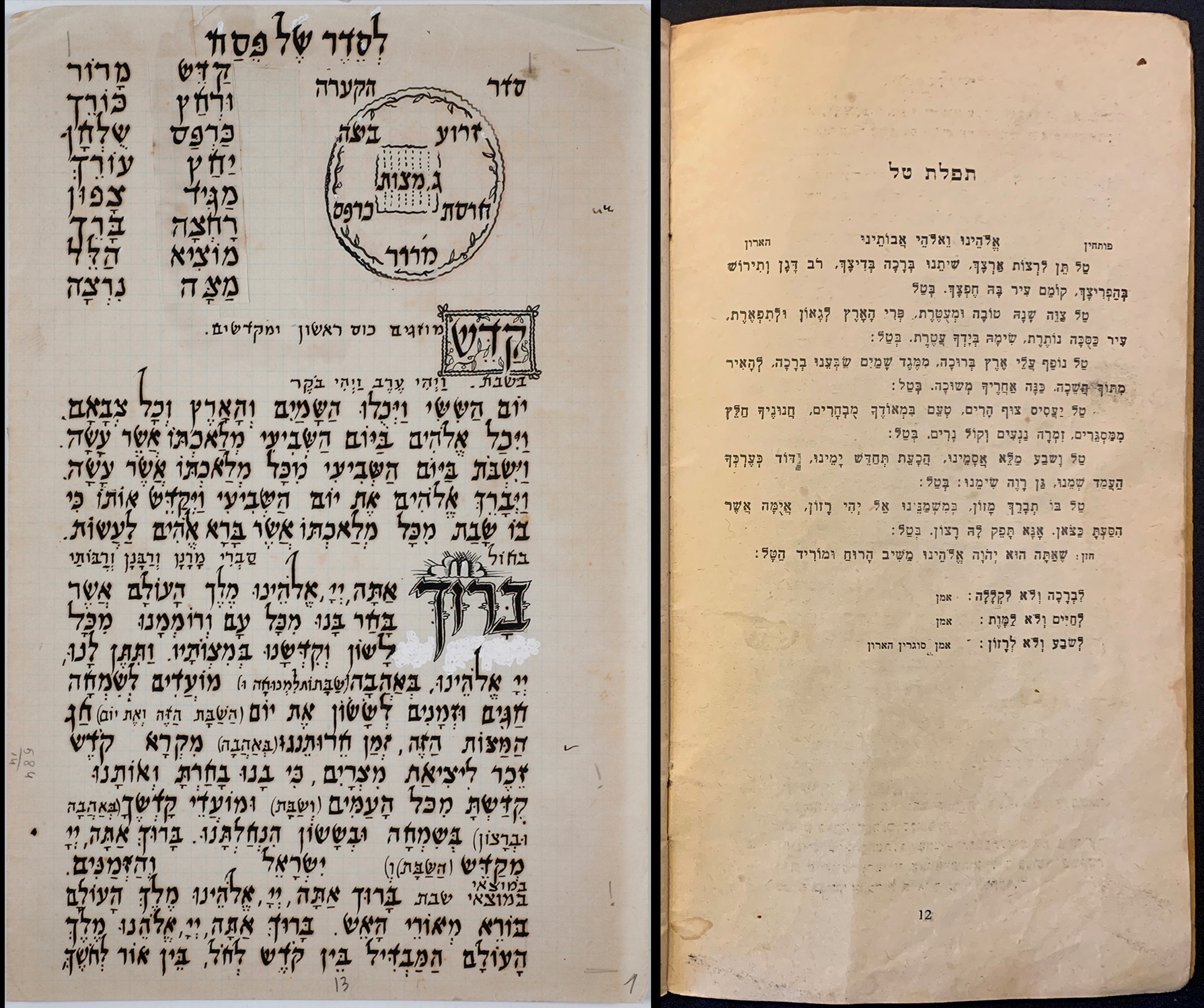
Rosenfeld said that Page 12 (photographed from my copy of the 1951 edition) is “a Jewish liturgy called ‘Prayer for Dew.’ It is said on the first day of Passover and in additional prayers on Sabbath and festivals.”
Page 13 is a paste-up. Only one vertical column of text was pasted onto the page. The drawings of the Seder plate and the decorative larger letters were all drawn on the page with Allweil’s Hebrew calligraphy. Notice the faint blue lines of graph paper that Allweil used to align his text. The camera doesn’t pick up blue, i.e. it won’t be visible on the negative.
Allweil reused the linocut of the prisoner on Page 14 from his 1943 book Scroll of Lamentations. On Page 15 the image is from a linocut he cut for his 1942 book Scroll of Esther. For his IDF Haggadah he drew a Star of David on the flag (upper left corner). Notice how the two images on Pages 14 and 15 contrast. The prisoner is in Biblical garb, while the individuals on Page 15 are dressed and armed in c. 1950 fashion.
The image on Page 18 is a linocut that Allweil made for his Scroll of Esther.
Allweil also turned to his Scroll of Esther for the illustration on Page 20. There the tips on the raised hand were missing; so were the toes of the kneeling woman. For this Haggadah he added them.
On Page 21 he turned to a linocut he made for his Scroll of Lamentations. There the woman on the left is stepping out of the rectangle. Here Allweil penned in more black so that only her hand extends slightly outside the rectangle.
Also on Page 21, the line of large letters (ויוציאנו יי ממצרים ביד) reads: And the Lord brought us forth out of Egypt with a hand….
Note that on both pages–in the middle right of 22 and at the bottom of 23–Allweil drew images of 20th-century armaments. On Page 22 the sword and the phrase underneath–”And fire and pillars of smoke and blood”–were borrowed from his Haggadah for Passover published the early 1940s
On Page 25 most of the imagery refers to enslavement in Egypt, one small figure–to the left of the whip-wielding Egyptian–is a figure with a swastika on his armband. Most of the figures referring to Egypt were borrowed from his first Haggadah. Here he redraw the three words for Pessach (for Paschal lamb), Matsa (unleavened bread) and Maror (bitter herb)
The illustration on Page 27 was borrowed from Allweil’s first Haggadah–from the early 1940s. Here he added a menorah above the head of the right-most figure. In his first Haggadah it was on the last page and was printed in red (below).
The line of large letters below that image (בצאת ישראל ממצרים) reads: When Israel went our of Egypt
The image on Page 28 was adapted from a two-page spread that concluded Allweil’s Scroll Of Lamentations. (See below) Besides trimming away the rectangular top of those linocuts, in his IDF Passover Haggadah, he added a basket of fruit to the standing male.
Part of the image at the bottom of Page 29 first was used on his first Haggadah.
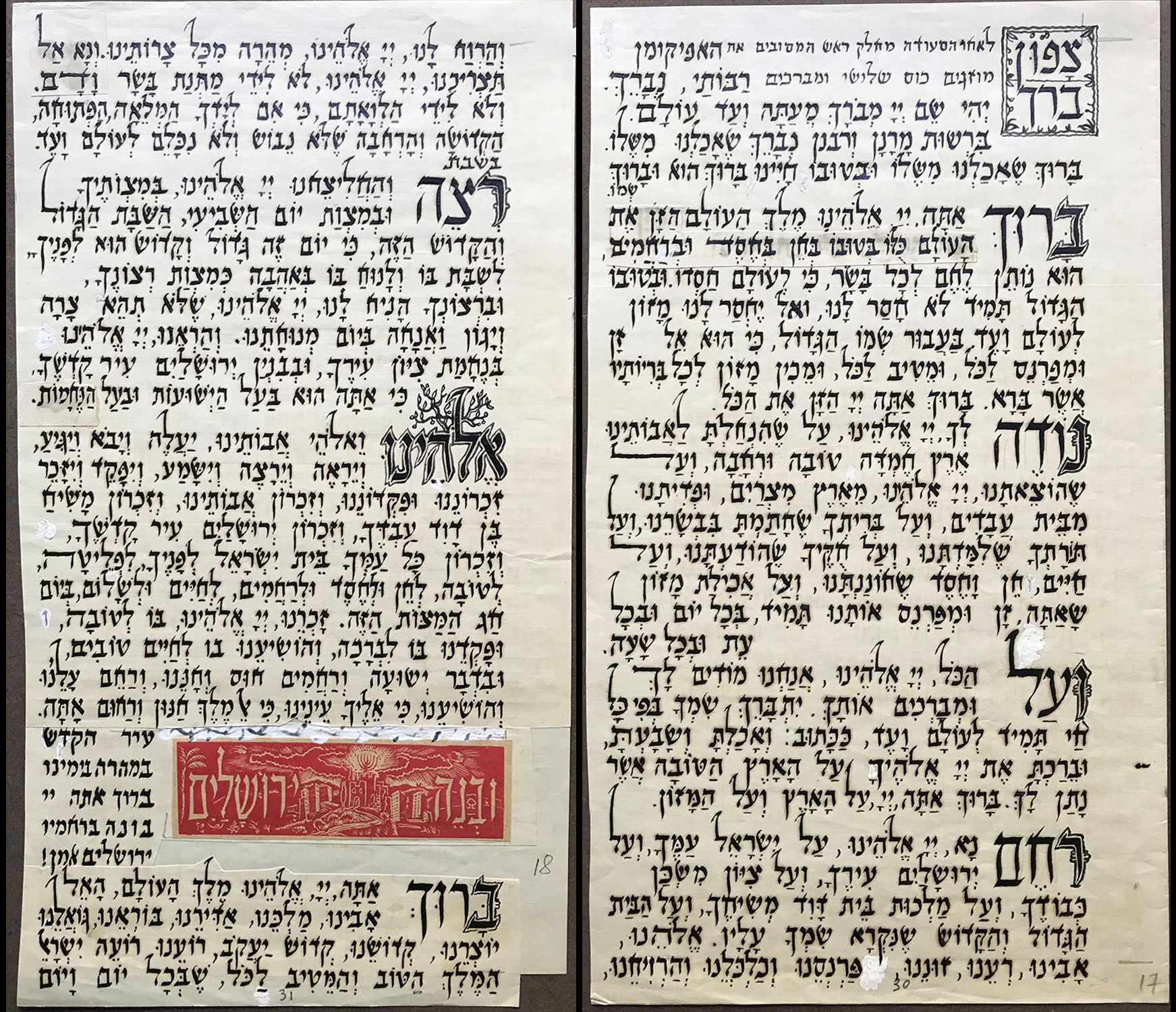
The image with words on Page 31 first appeared in Allweil’s first Haggadah.
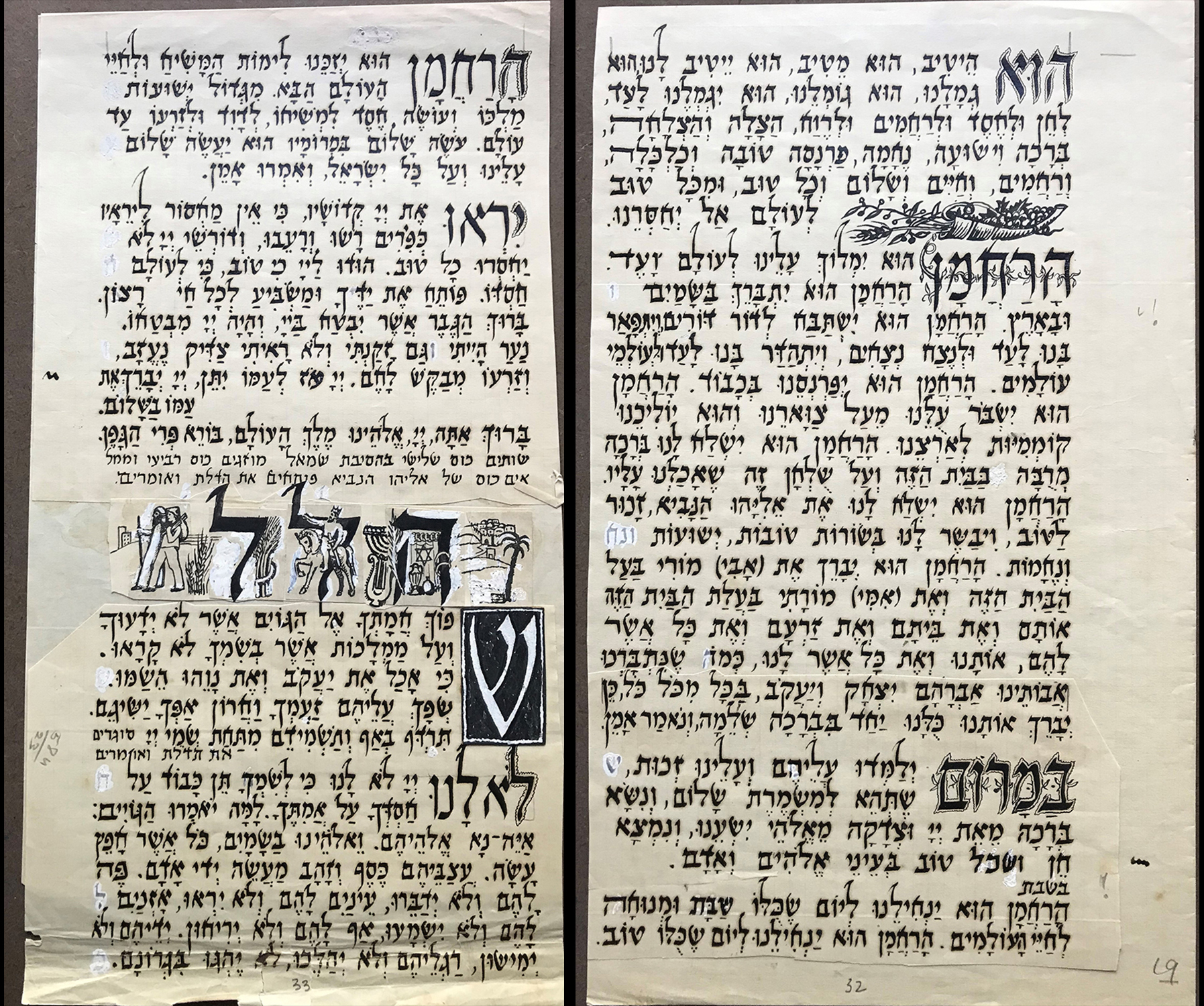
The three letters amongst the small drawings on Page 33 read: Praise (הלל)
Page 34 contains the most significant illustration that was new to this Haggadah. The eight figures surround the phrase “Pour out thy wrath.” In an email Ruth Sperling wrote: “I might comment with respect to the image of p34 that unlike the traditional Haggadot, where the heroes are only from the Bible, our father added the male and female soldiers of the Independence War.” Her sister Nava Rosenfeld provided preparatory drawings in sanguine chalk and ink (brown, red sienna) for each of the figures. He used opaque white to refine the images for the camera. I assembled them in the configuration of Page 34.
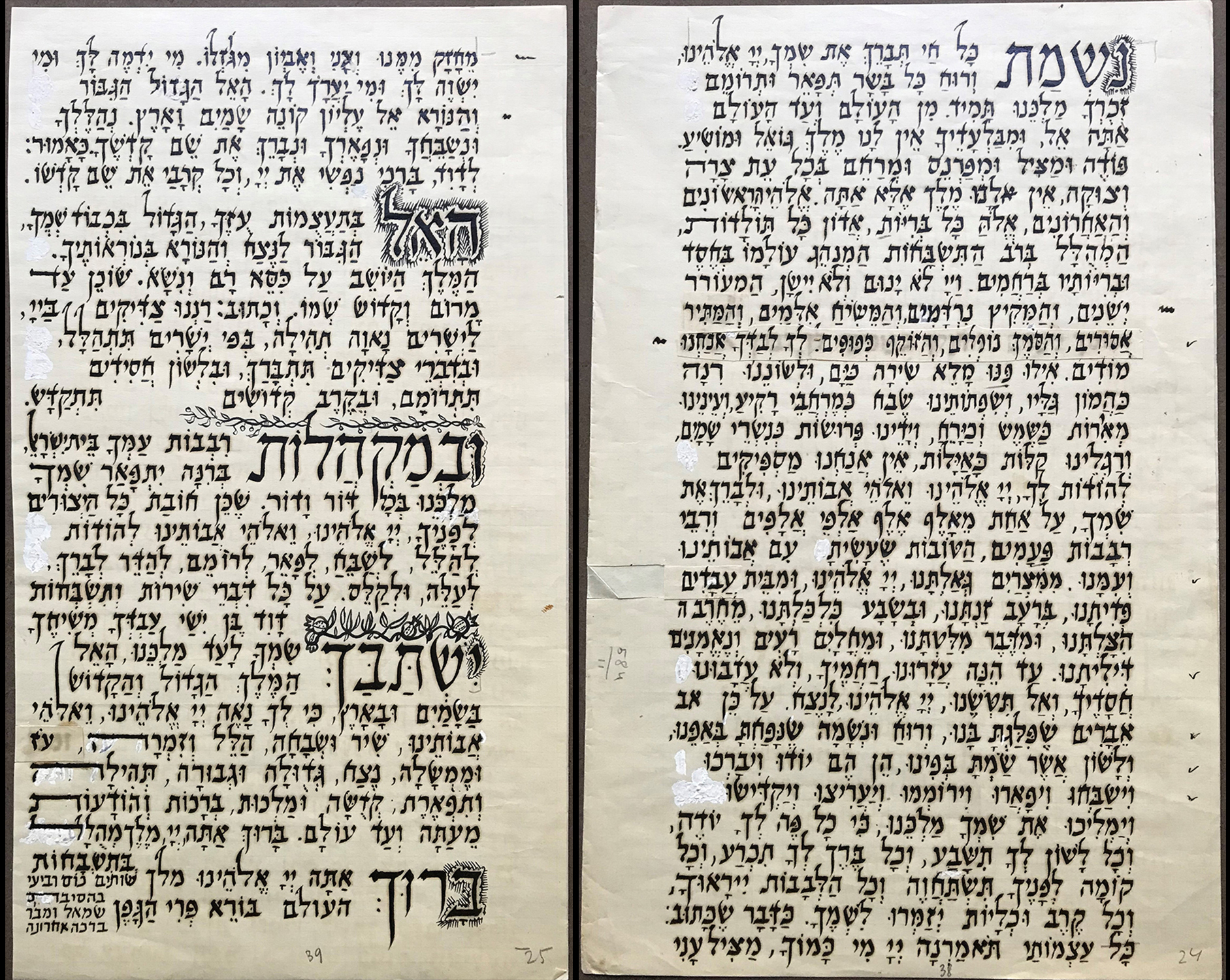
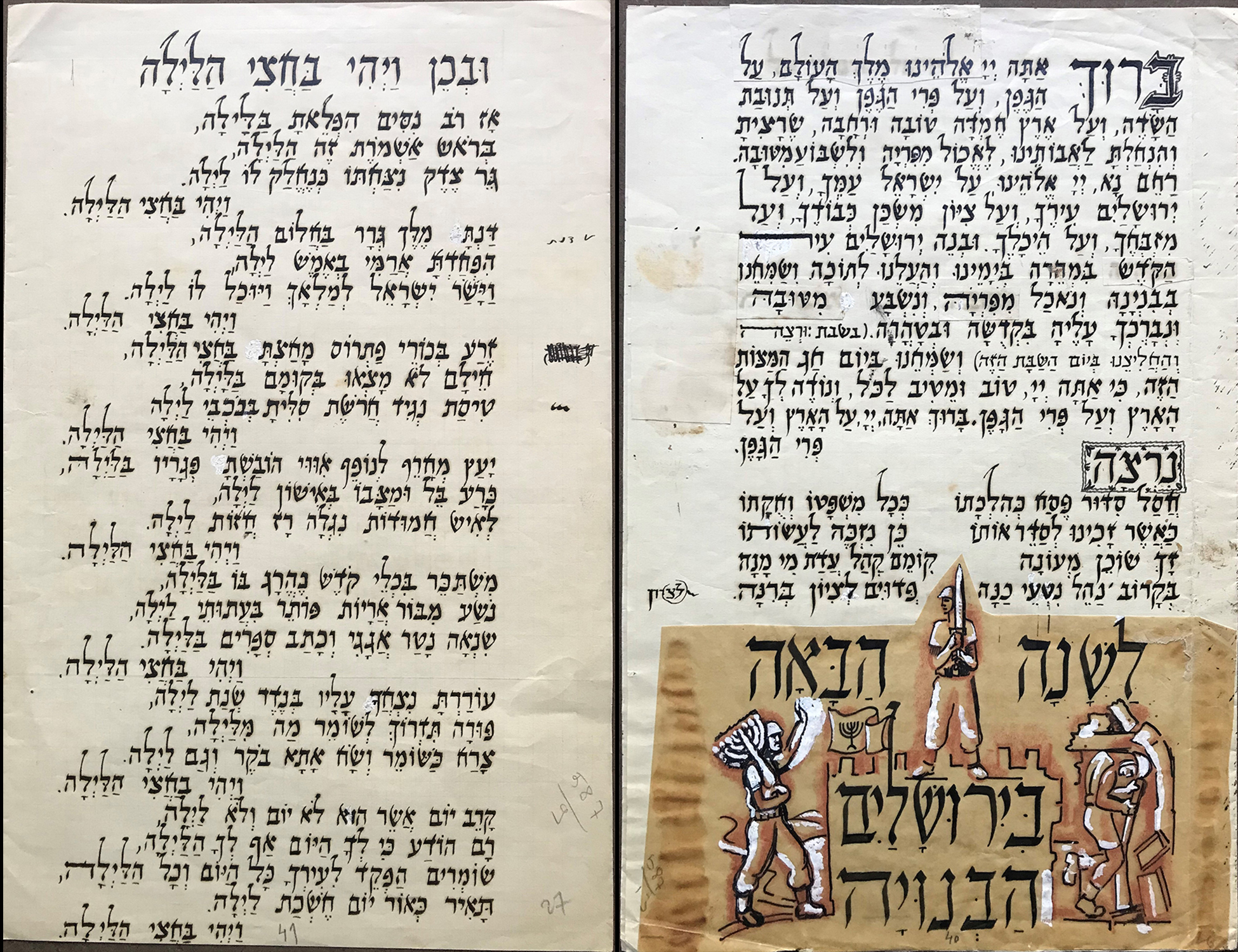
The words amongst the figures on Page 40 read: Next year in rebuilt Jerusalem (לשנה הבאה בירושלים הבנויה)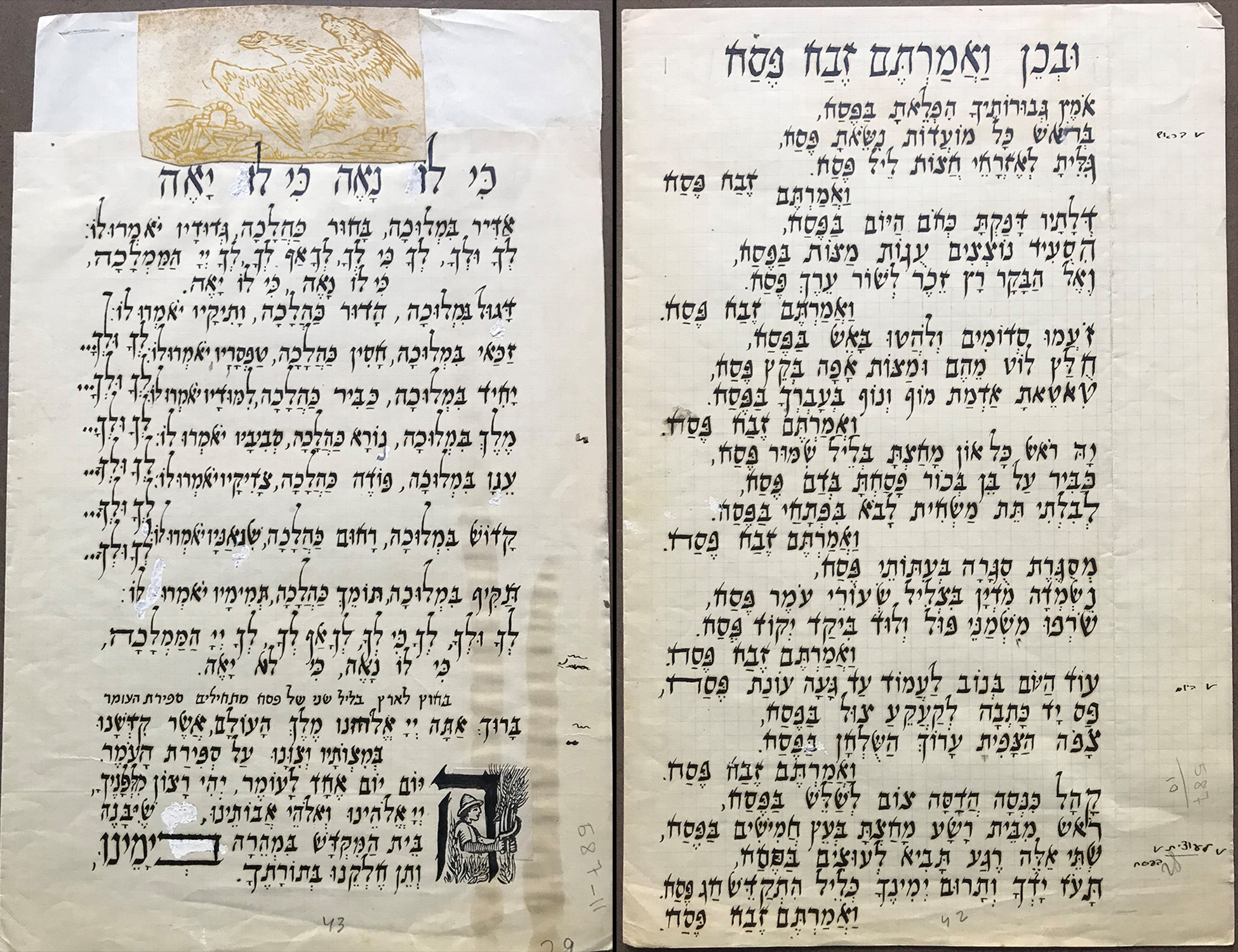
A change was made to the bottom of Page 43 before the Haggadah was published. As shown below the published Page 43 has a crown and roses. When I asked Nava Rosenfeld to explain why the change, she said: “The text at the bottom refers to the Seder of Passover at the diaspora. That’s why it is missing.”
On Page 44, the words between the two women read: Mighty is He.
Page 45 begins three pages for the song “Who Knows One.” On these pages the Hebrew text was machine made and are in stark contrast to Allweil’s calligraphy, as on Page 44.
This spread, photographed from my copy, closes the IDF Passover Haggadah. While I could not find a duplicate use of this linocut in Allweil’s other Haggadot, the similar imagery can be found the his Haggadah for Passover (in red) and Chapters for Passover Celebration (in brown).
Allweil’s fourth Haggadah
In 1954 Allweil published a fourth Haggadah that his daughters call his “painted Haggadah” because it’s illustrated with reproductions of 17 of his paintings. He painted some of them them for the dining halls for soldiers. Therefore it completes a cycle of Haggadot he made around the fight for independence. I’ll devote my last blog post on Arieh Allweil to his “painted Haggadah.”
Trackback URL: https://www.scottponemone.com/arieh-allweils-idf-haggadah/trackback/

